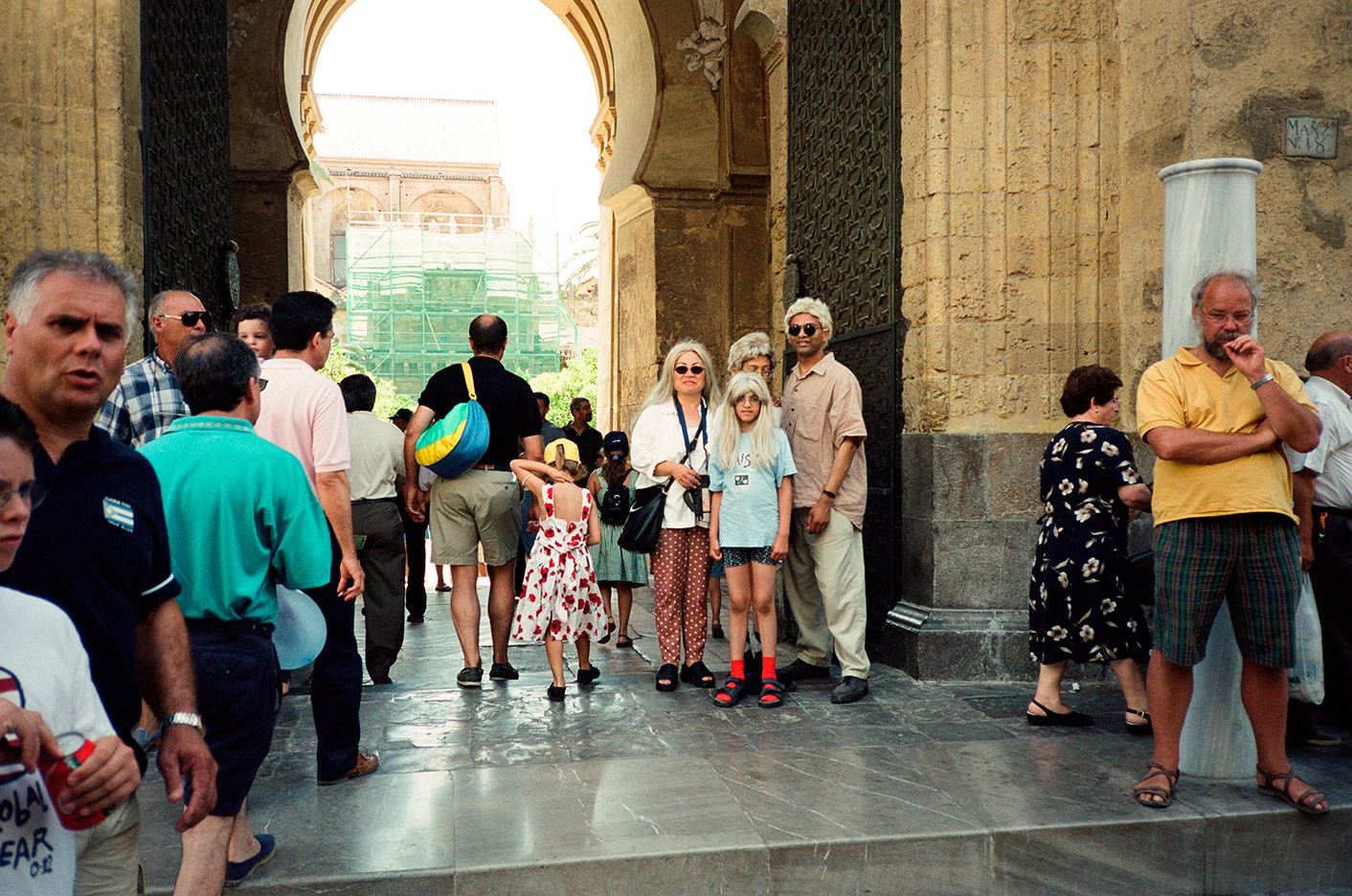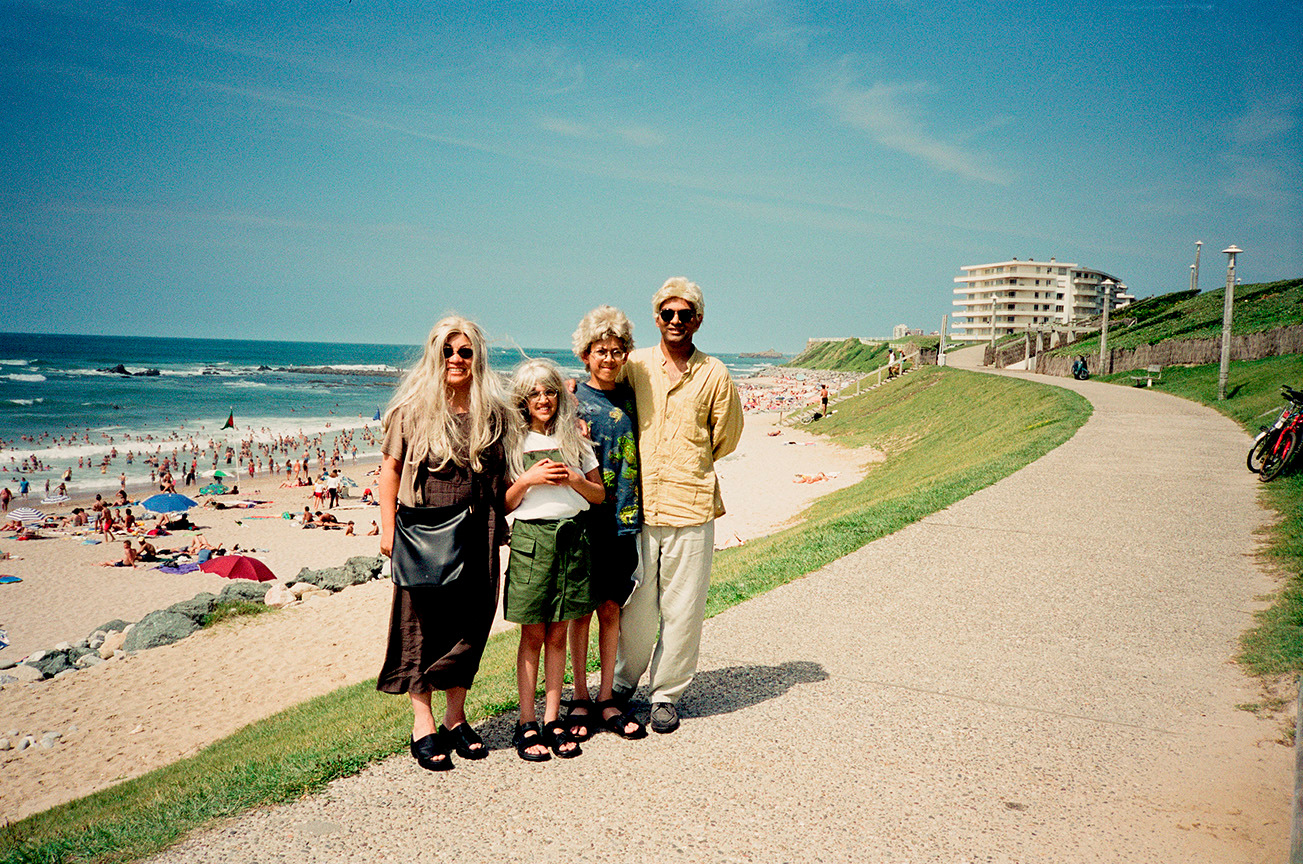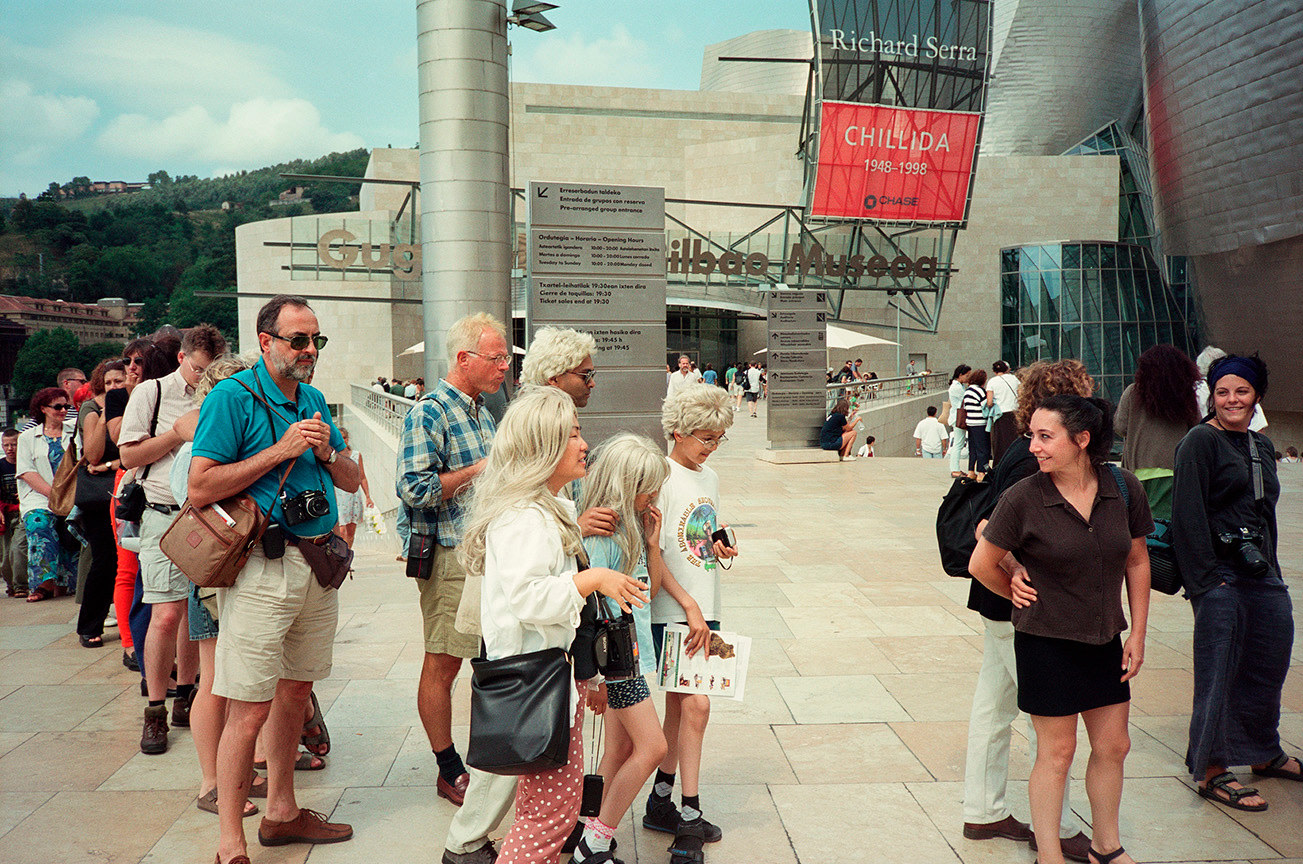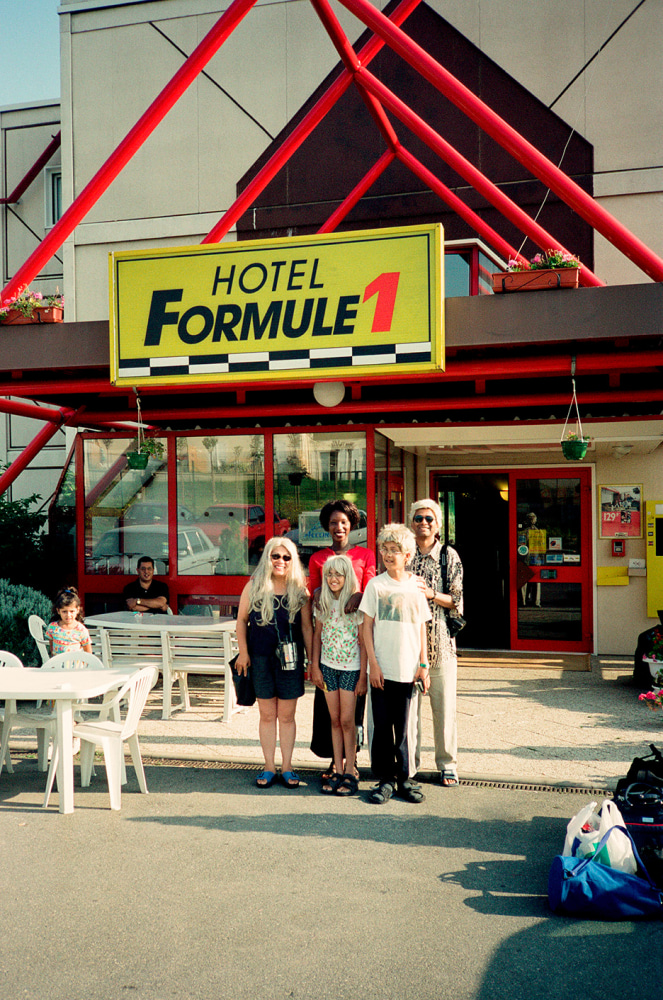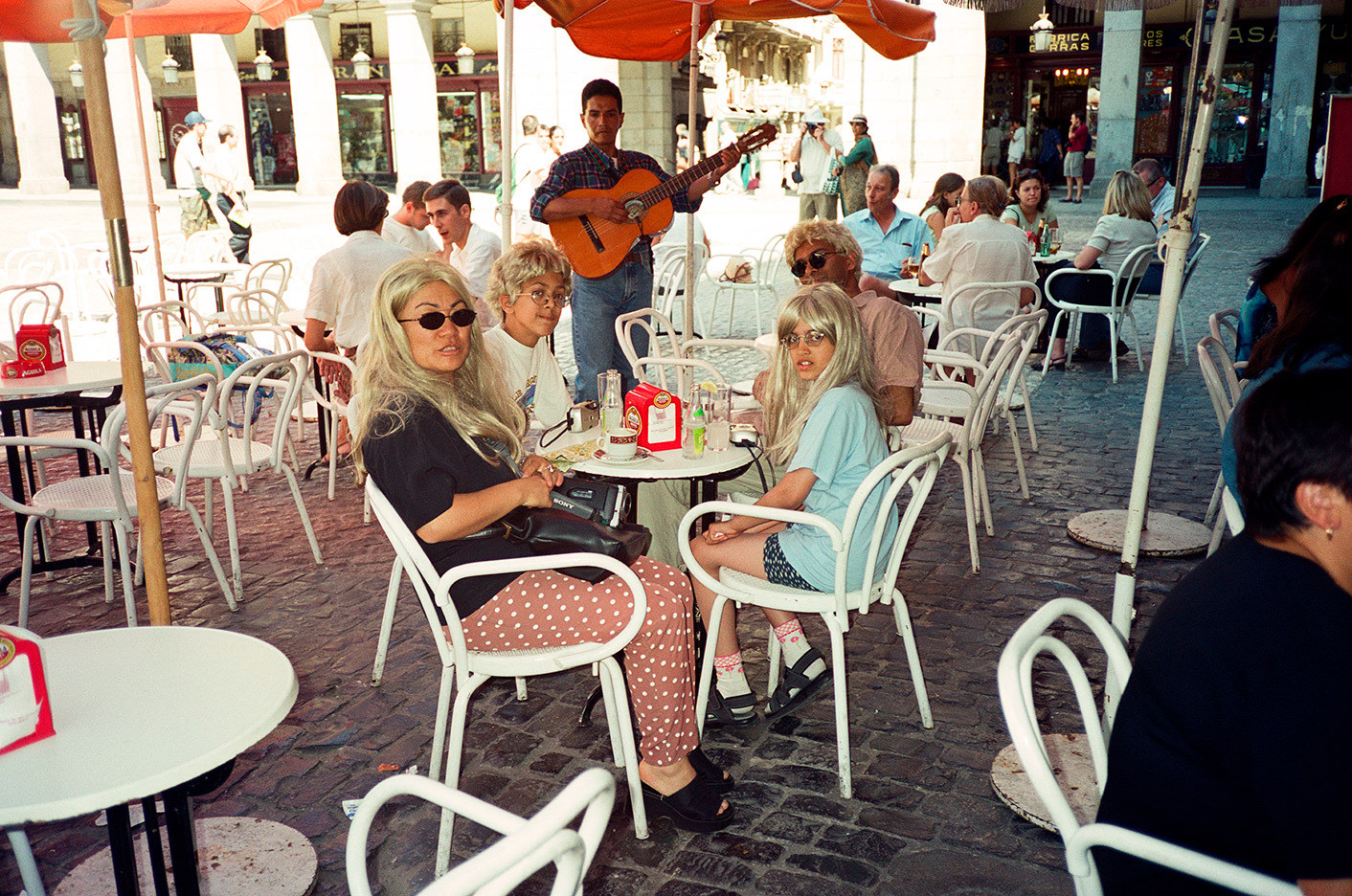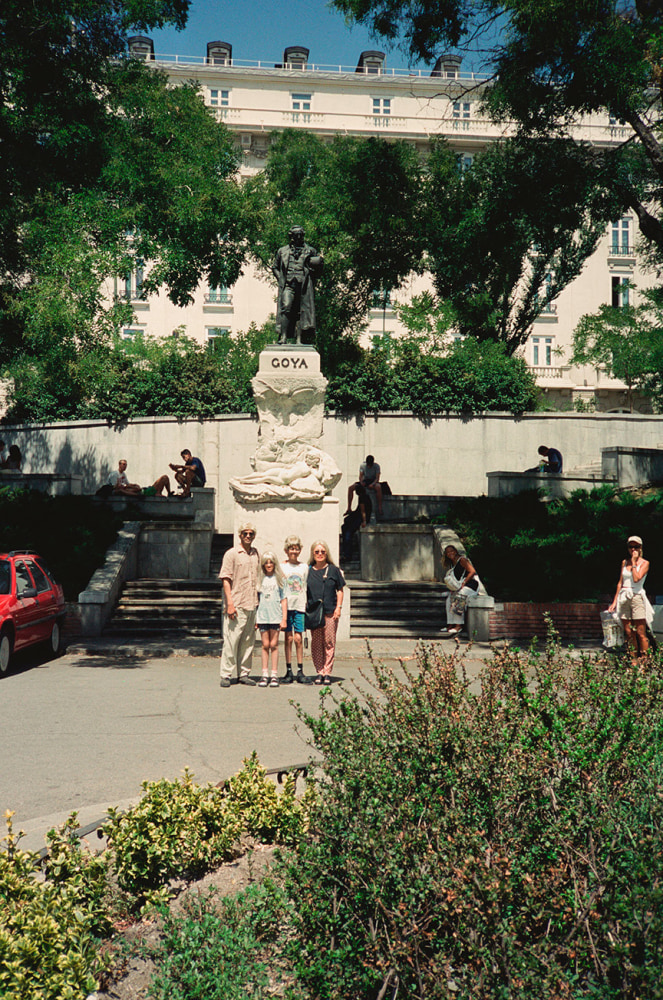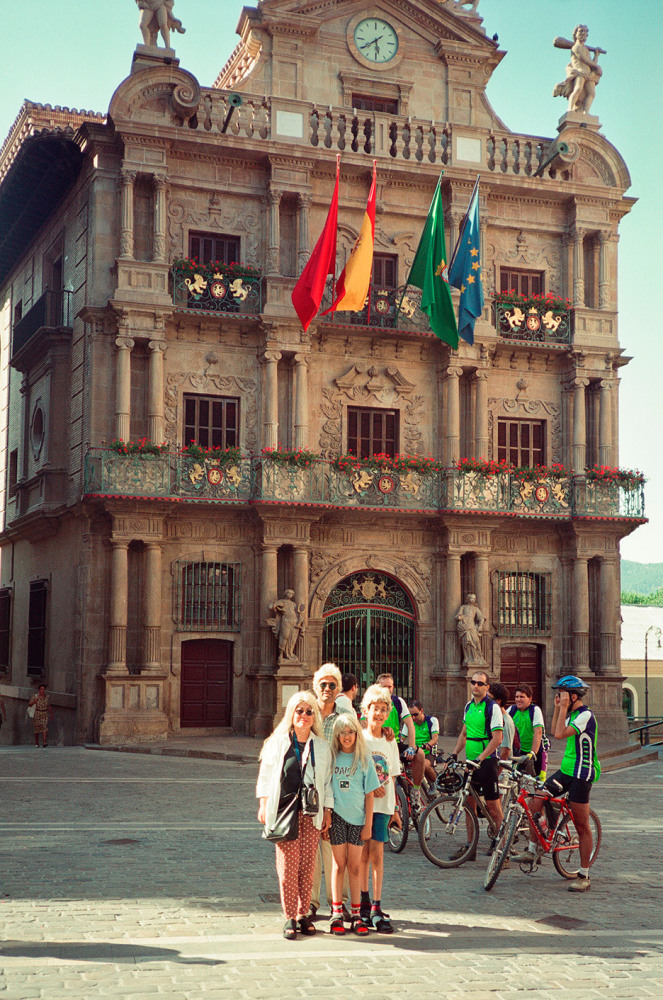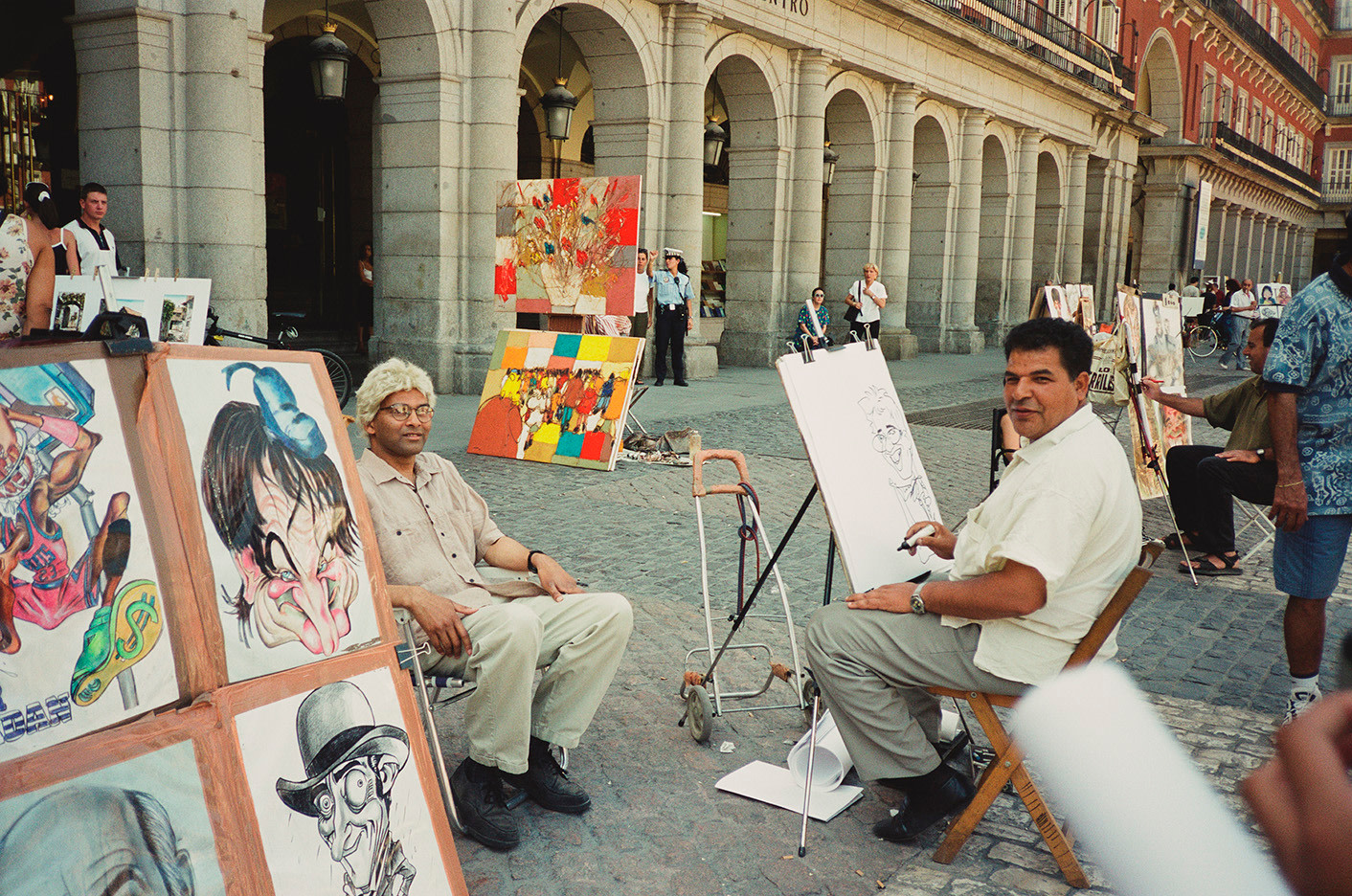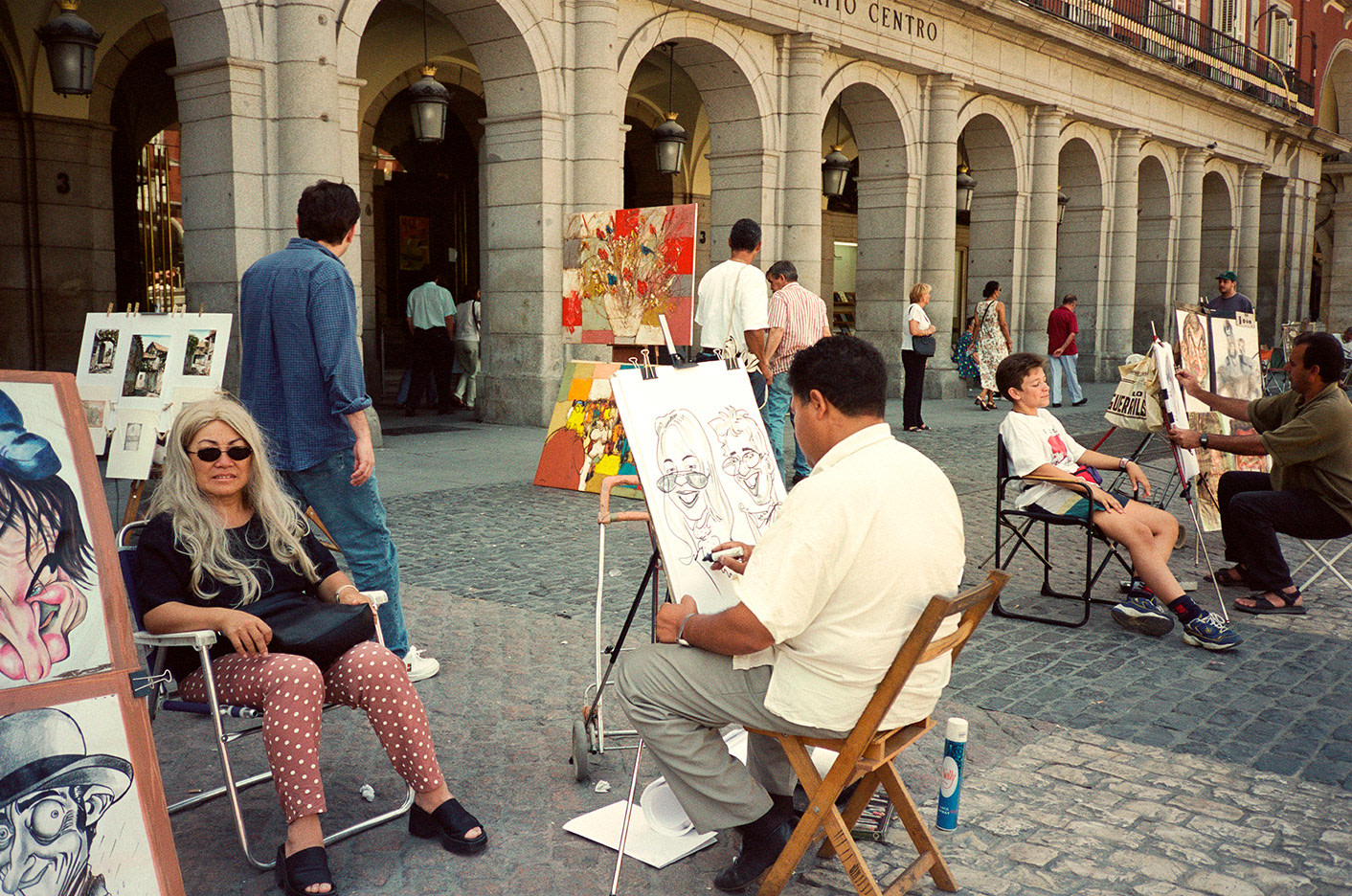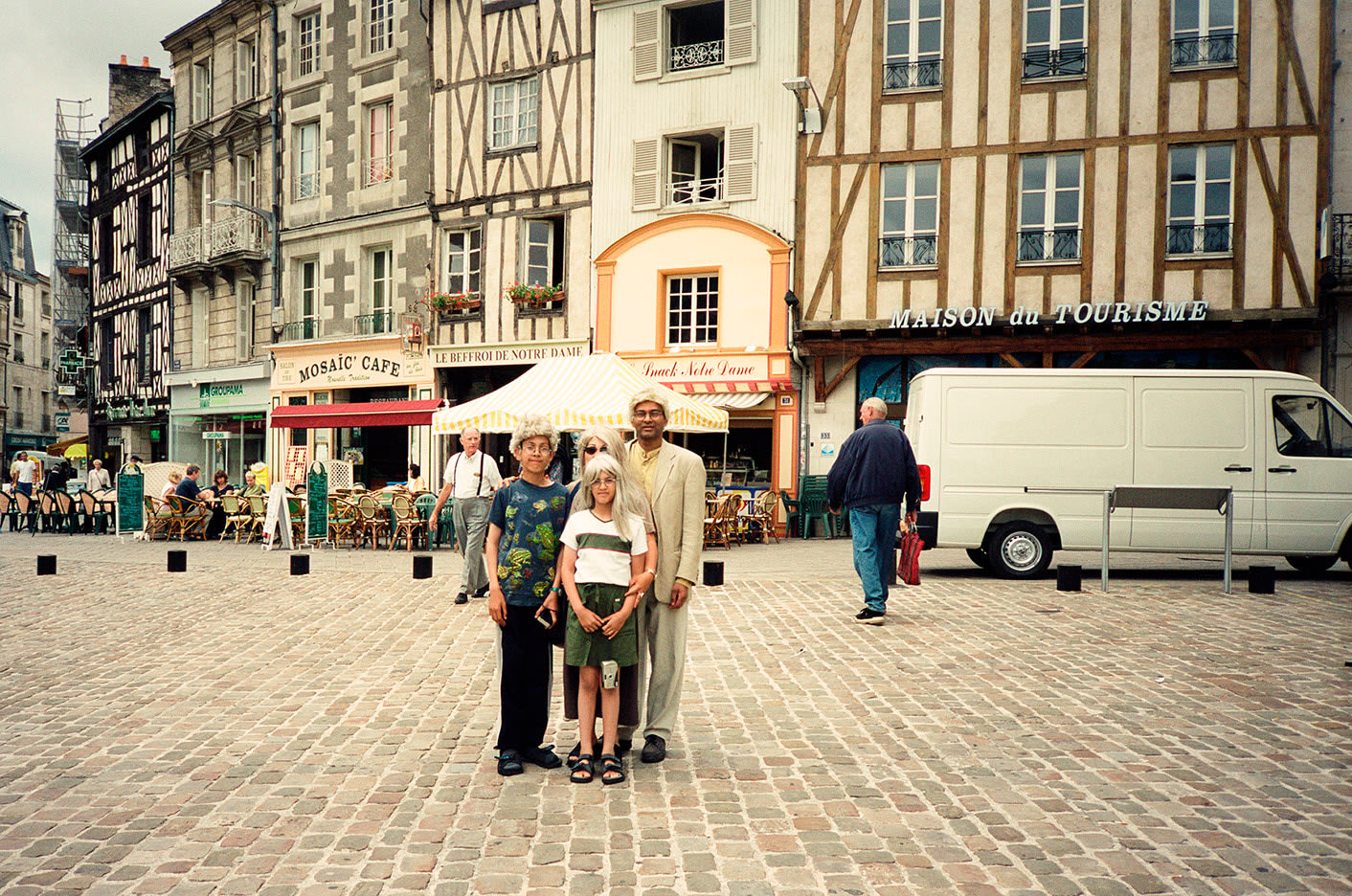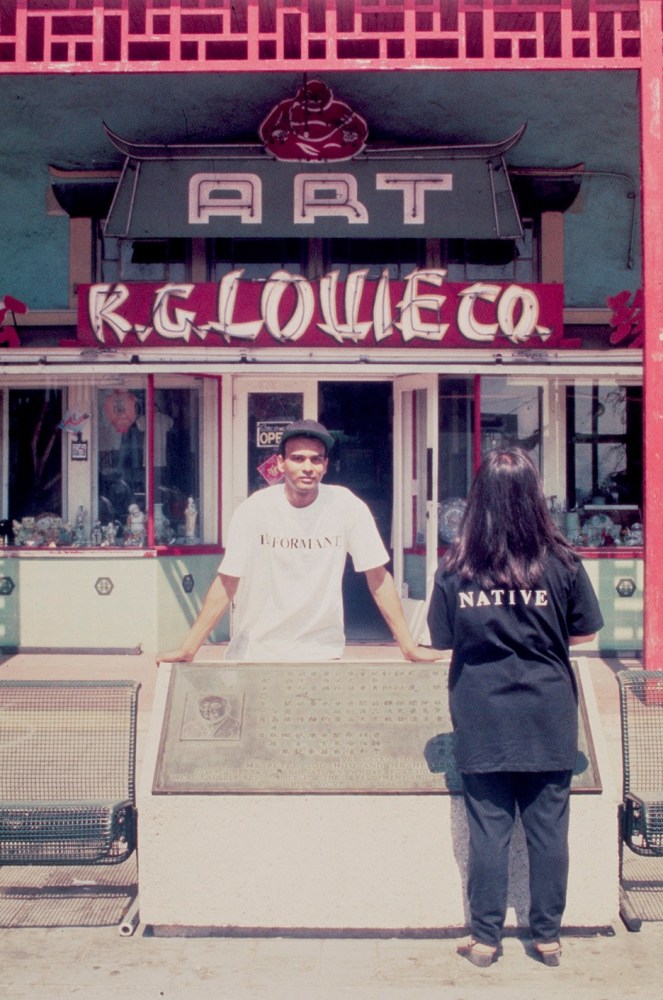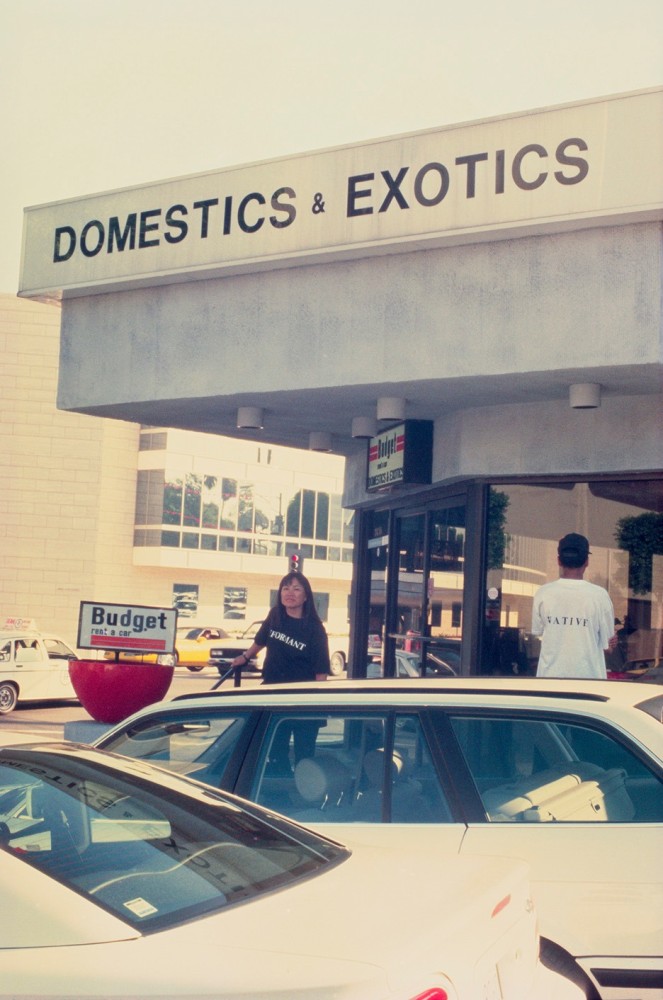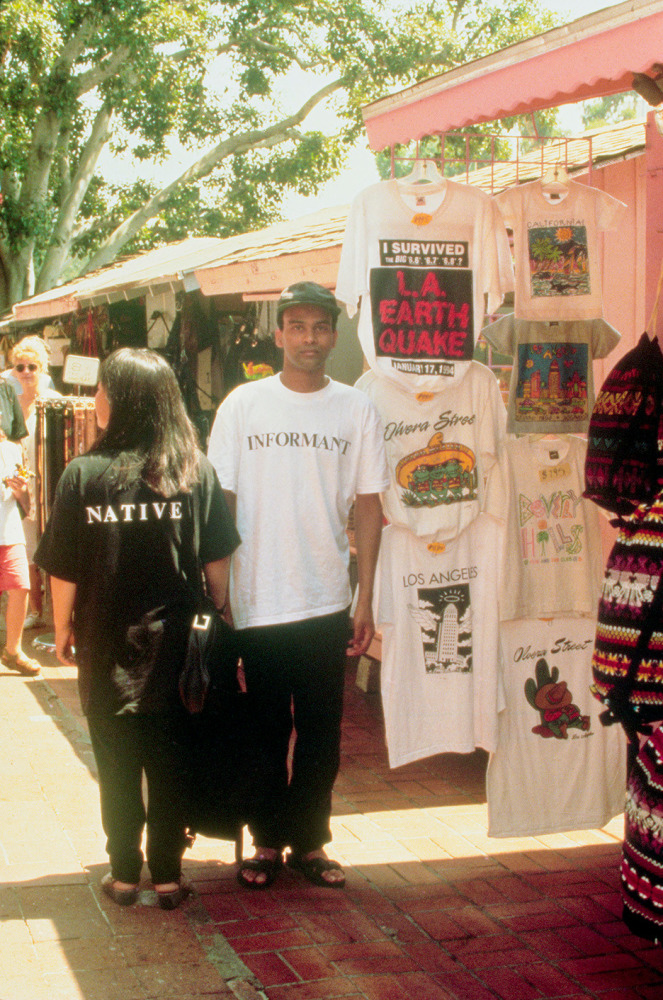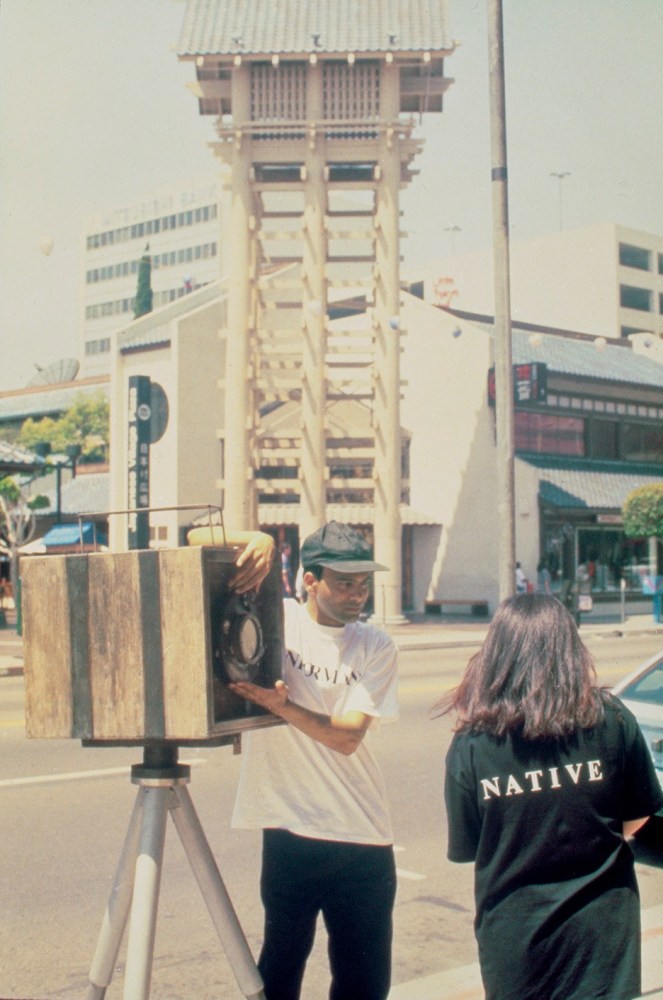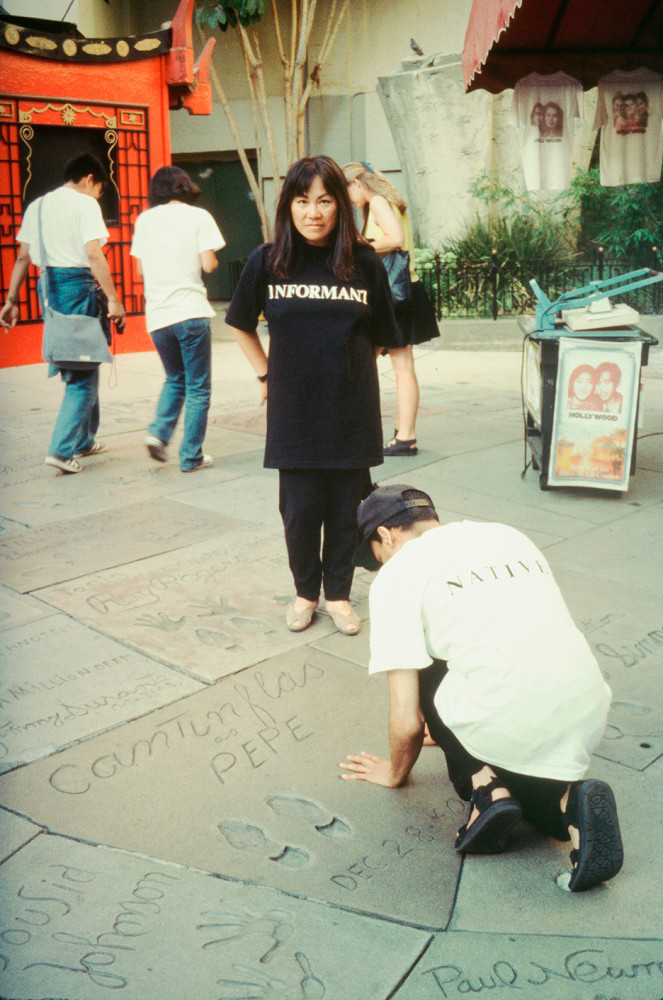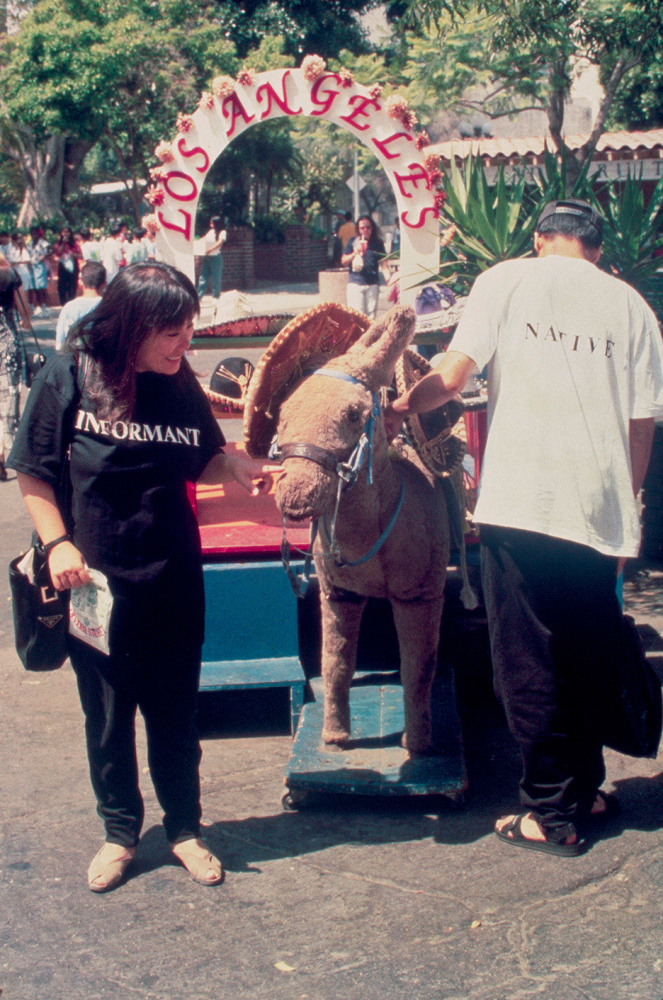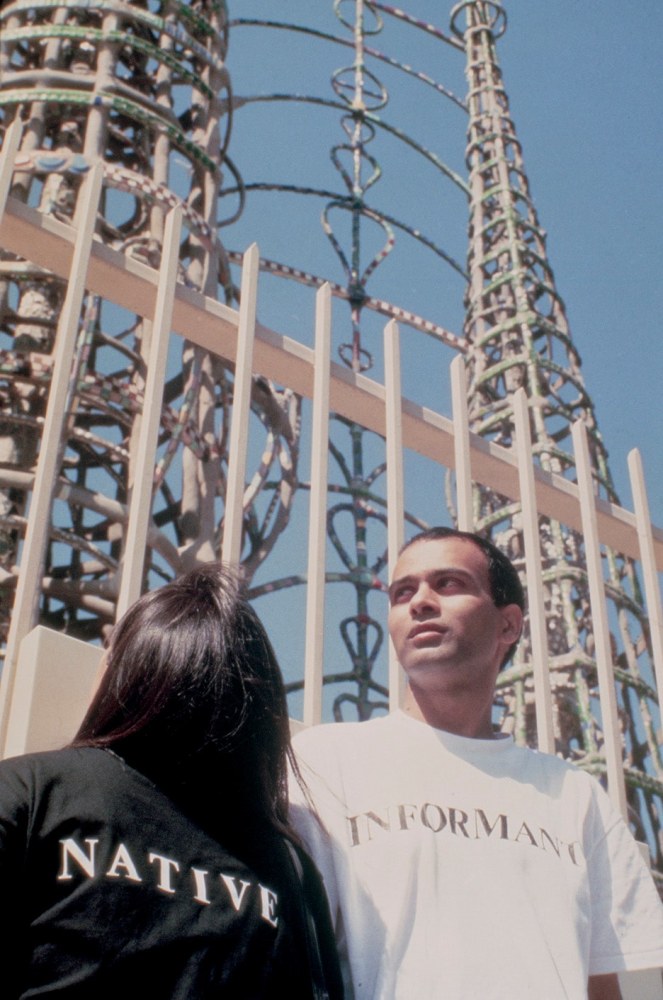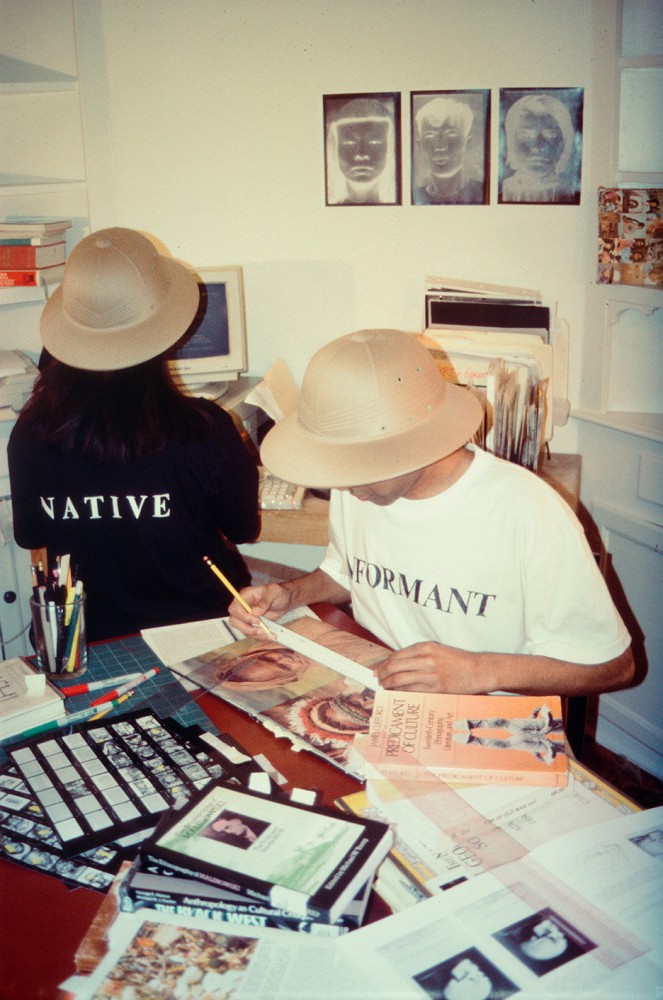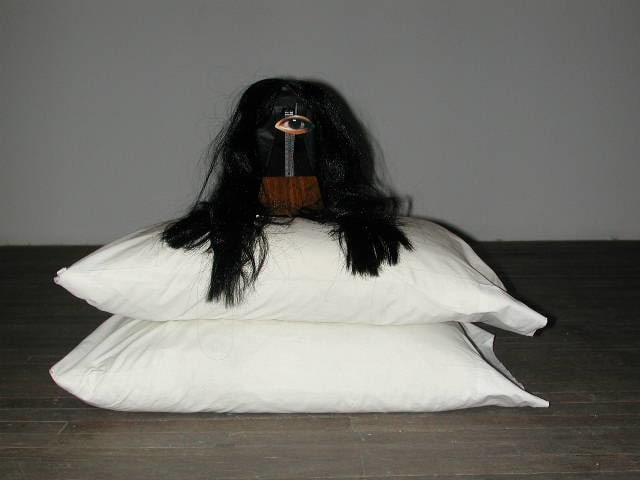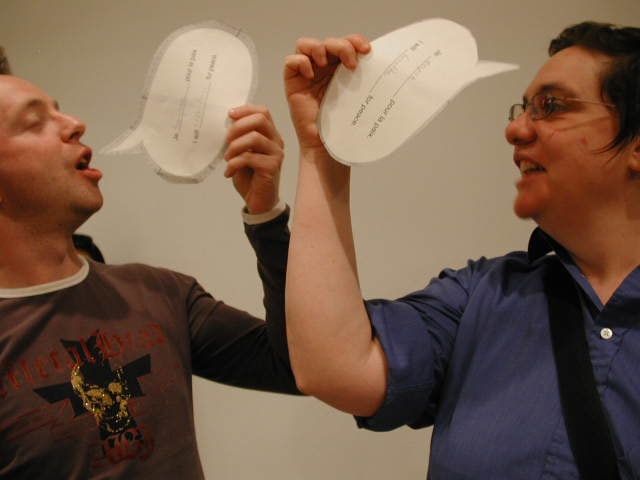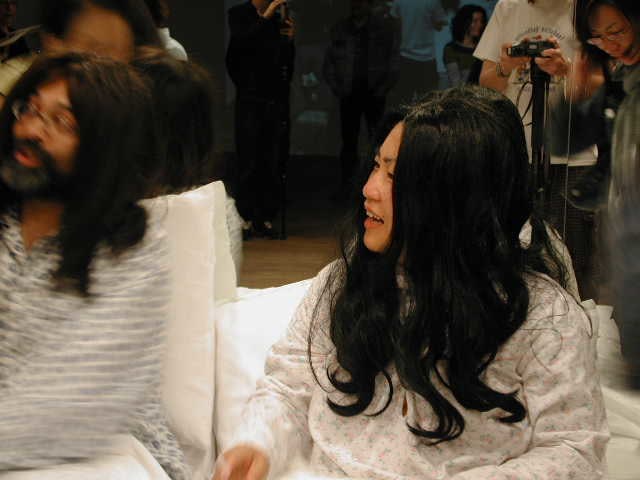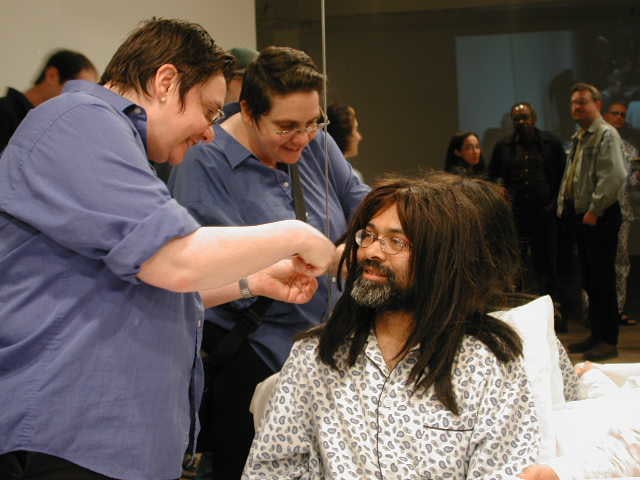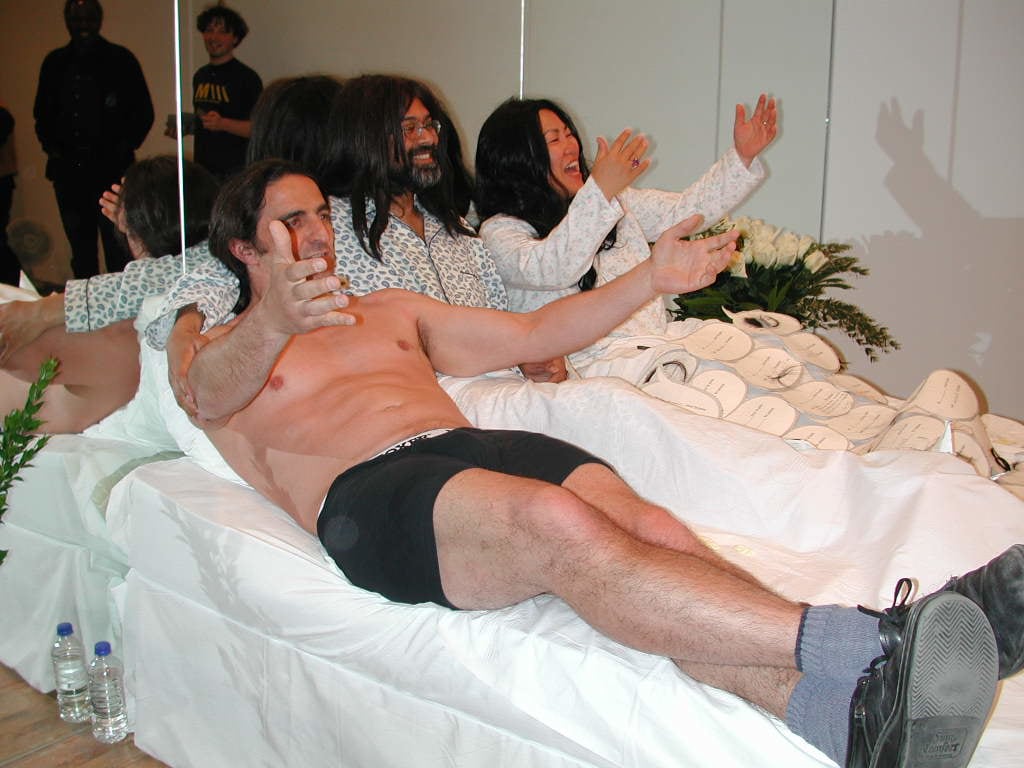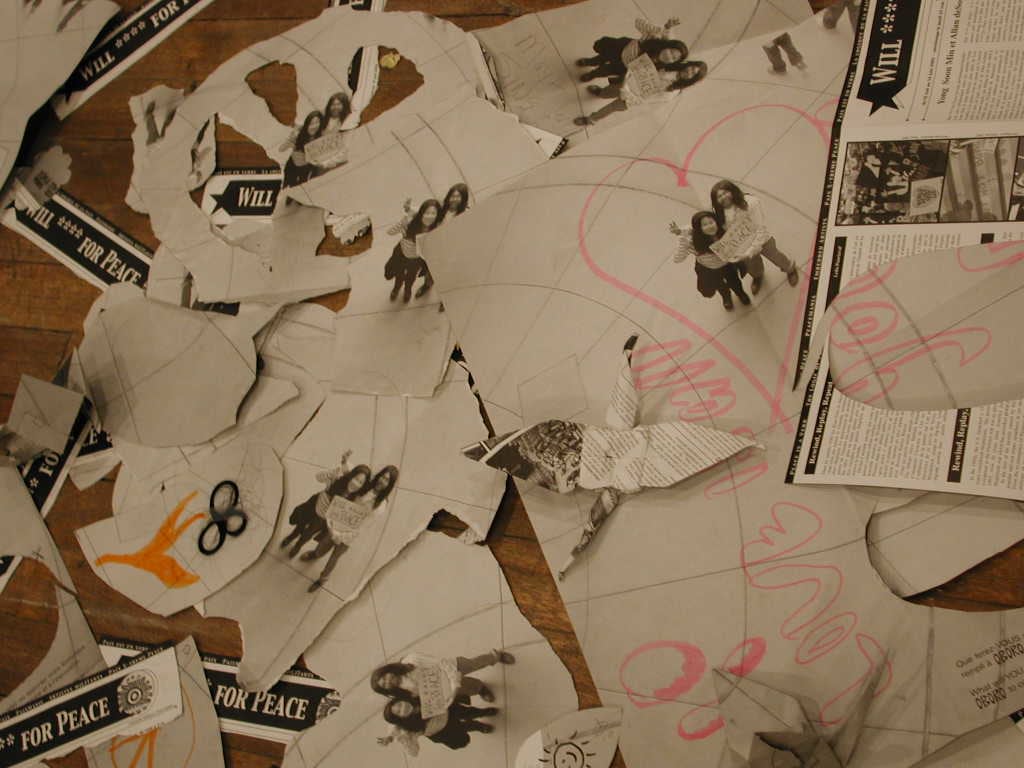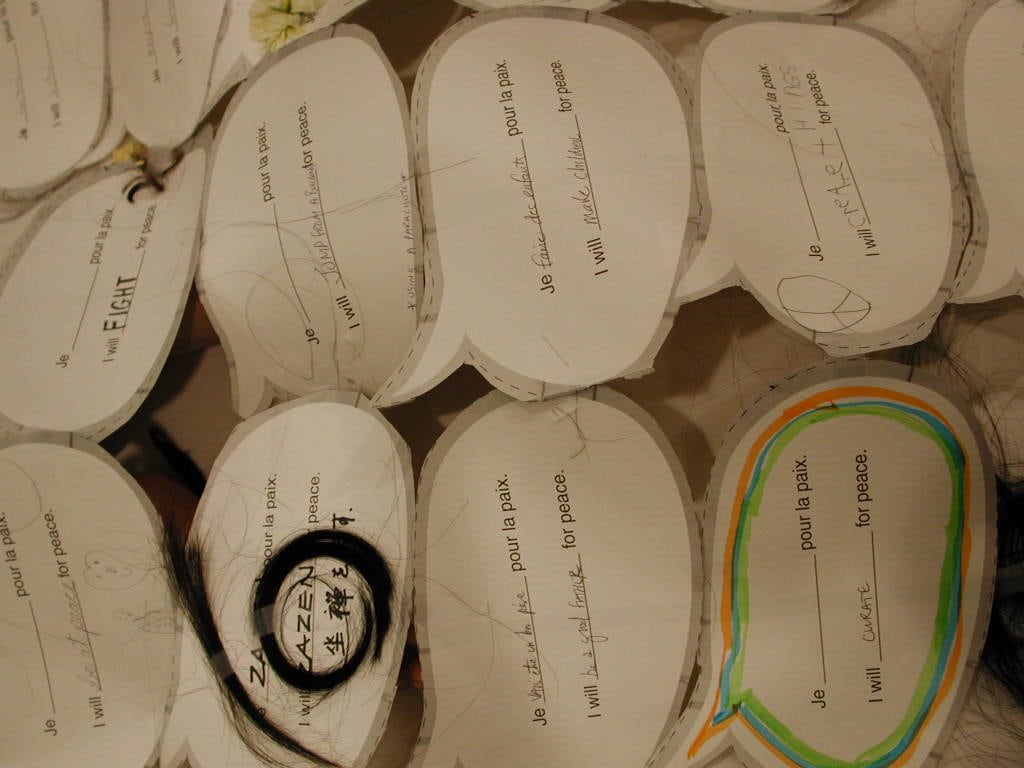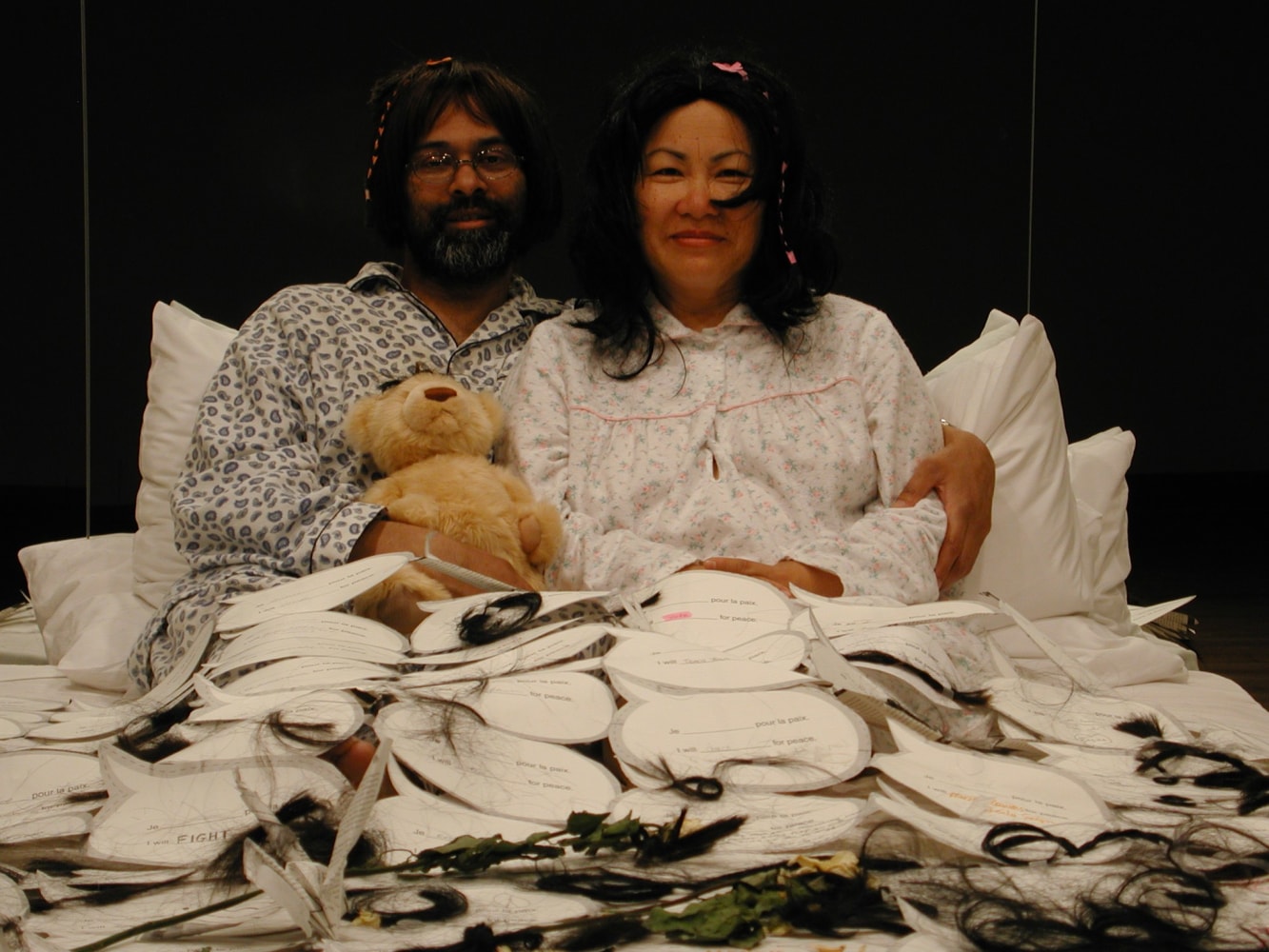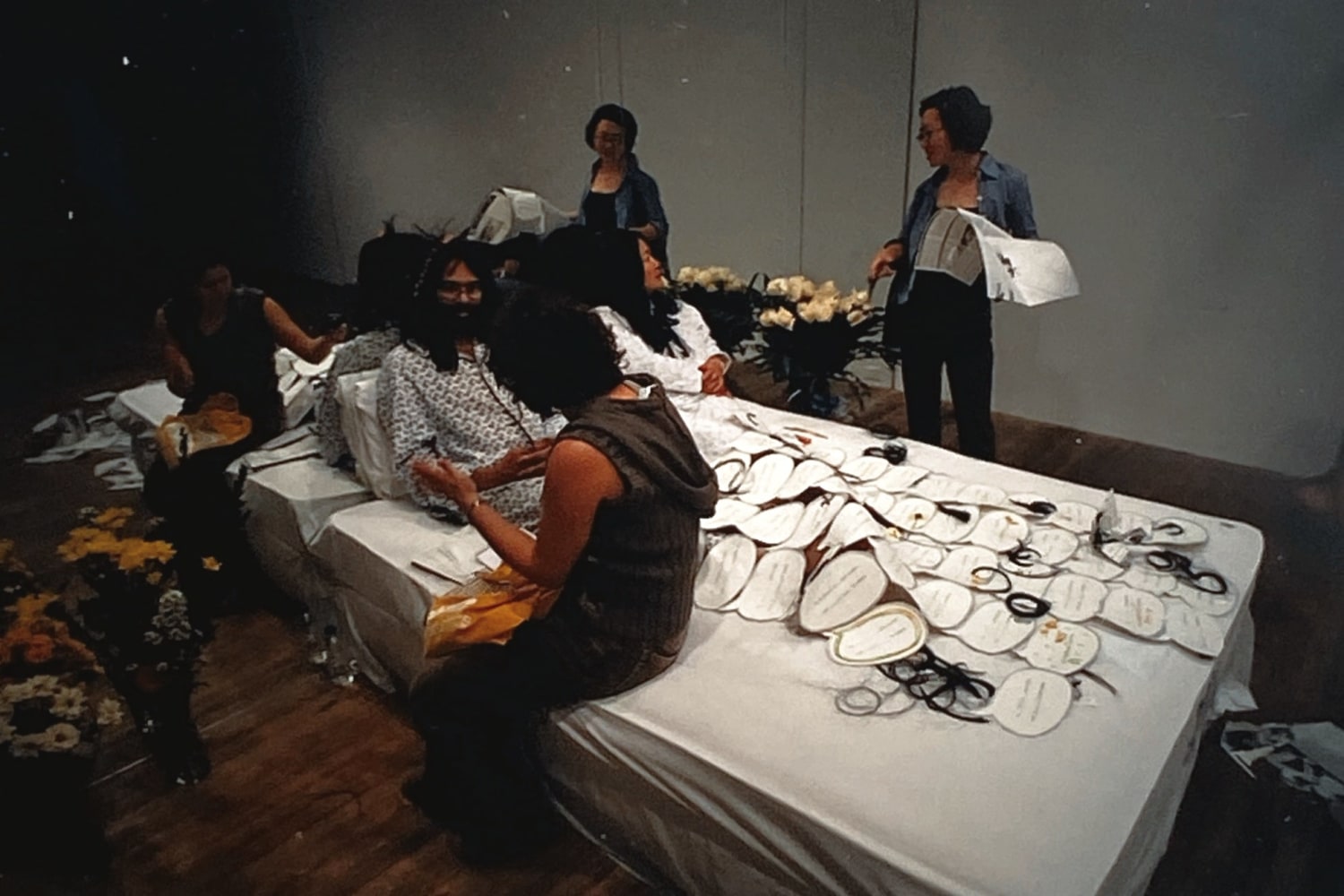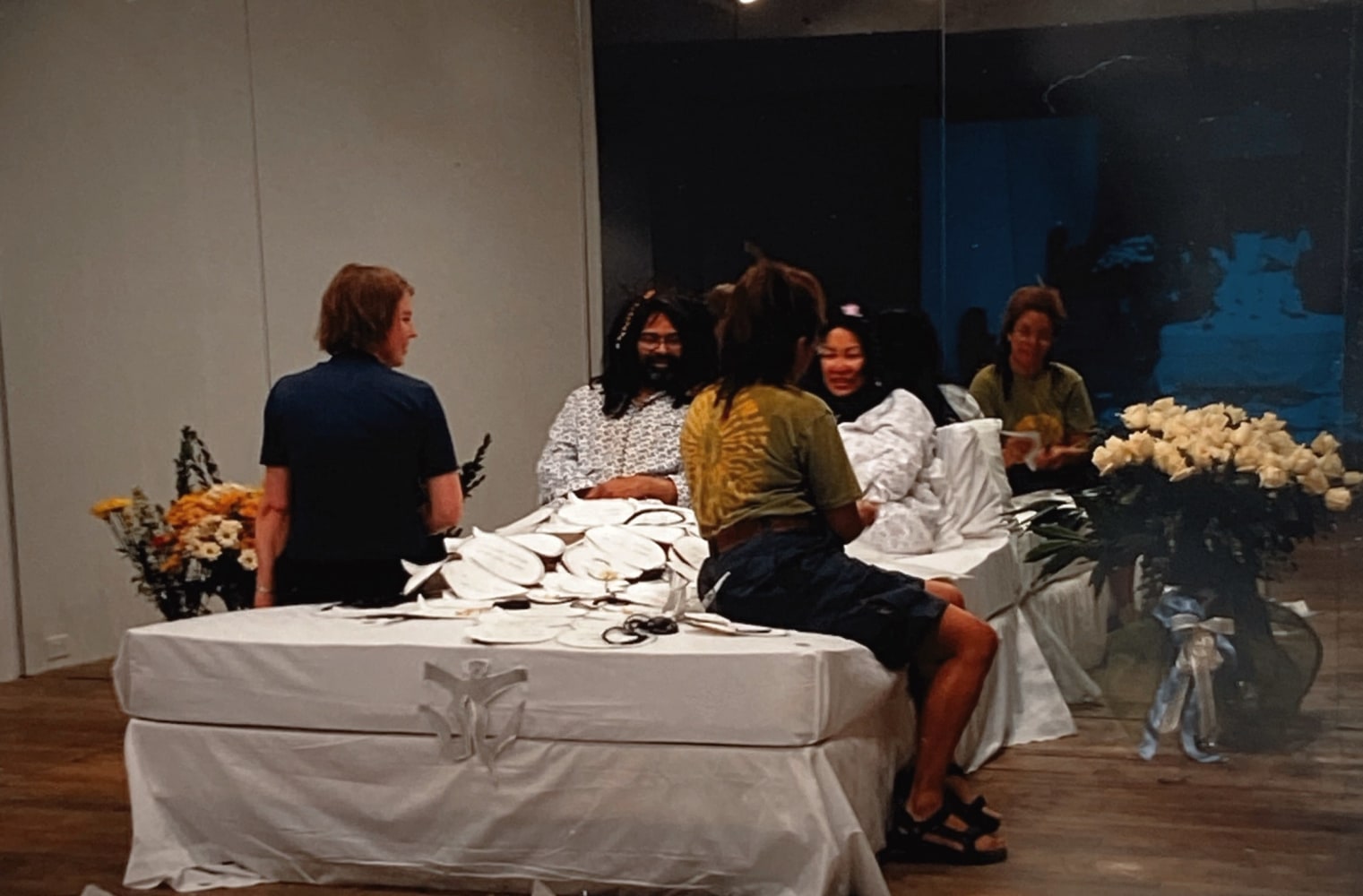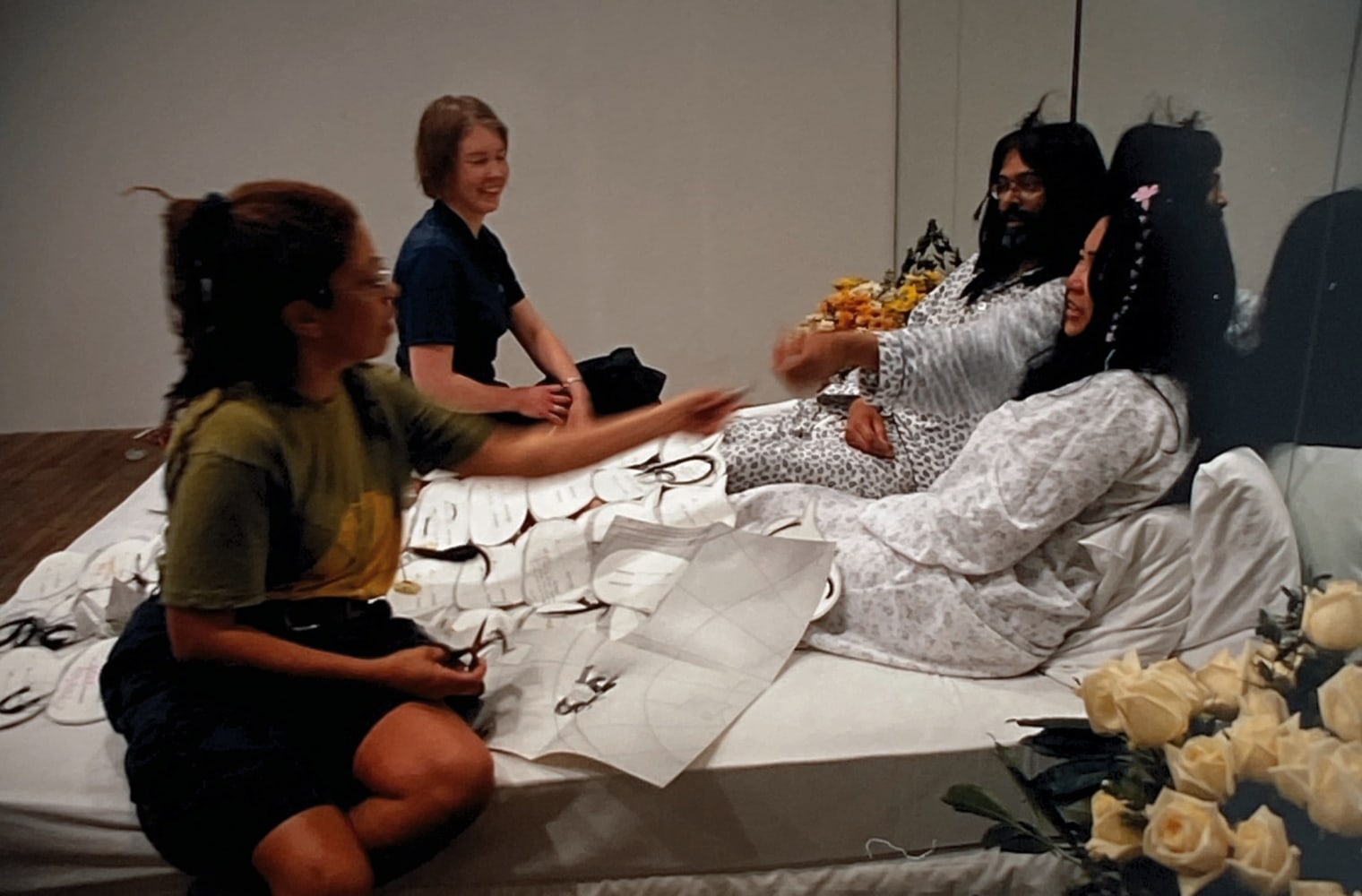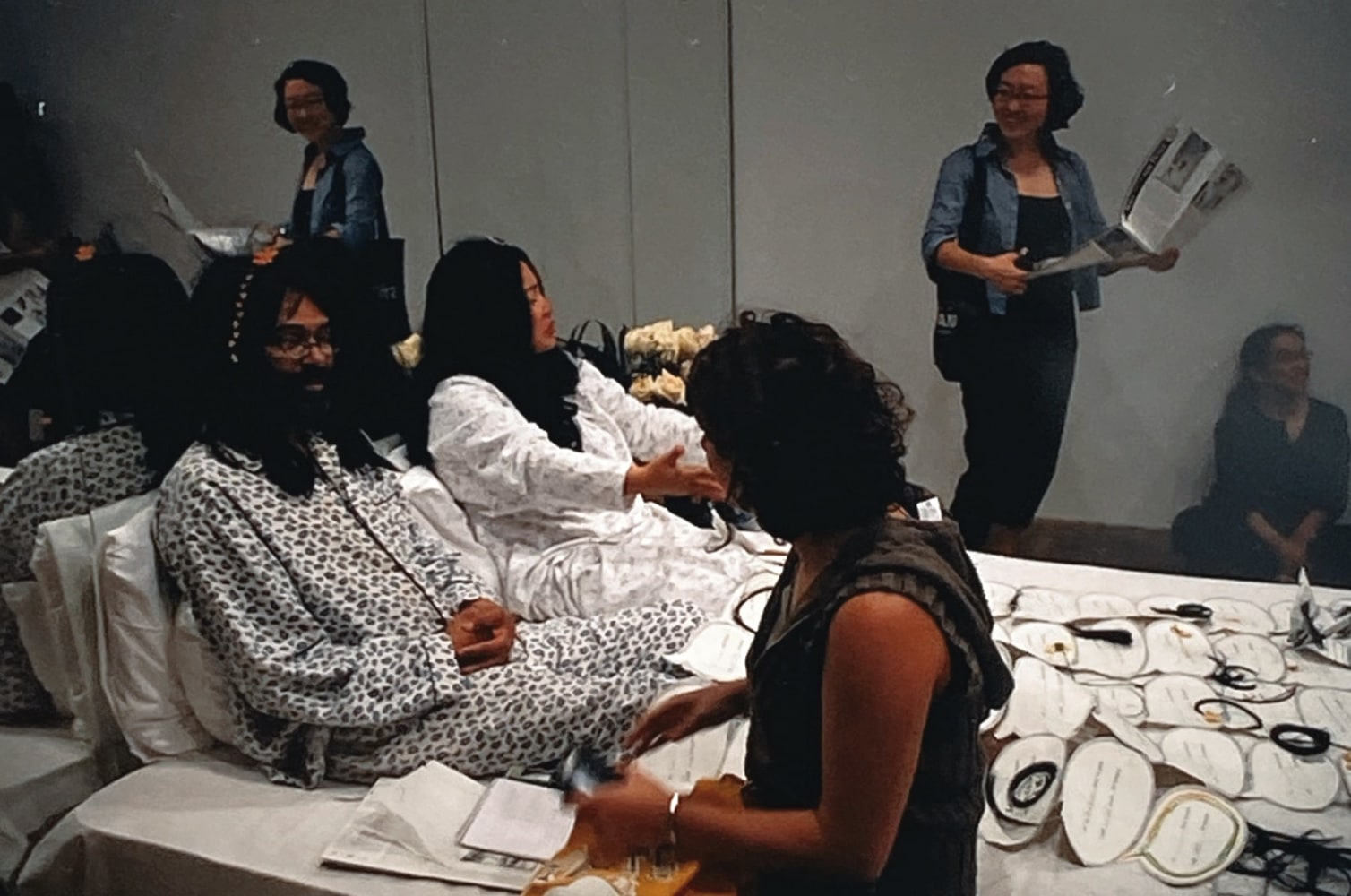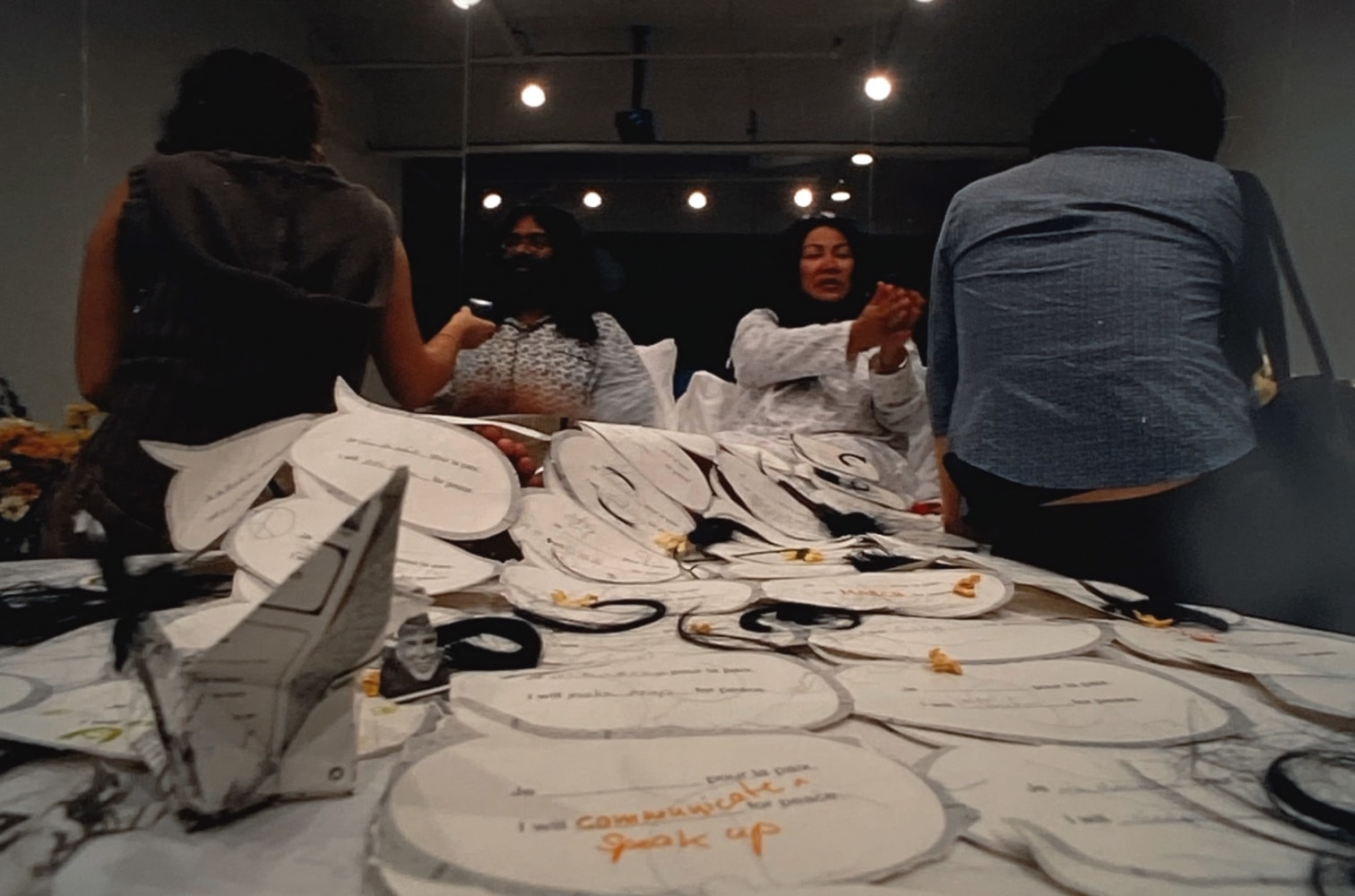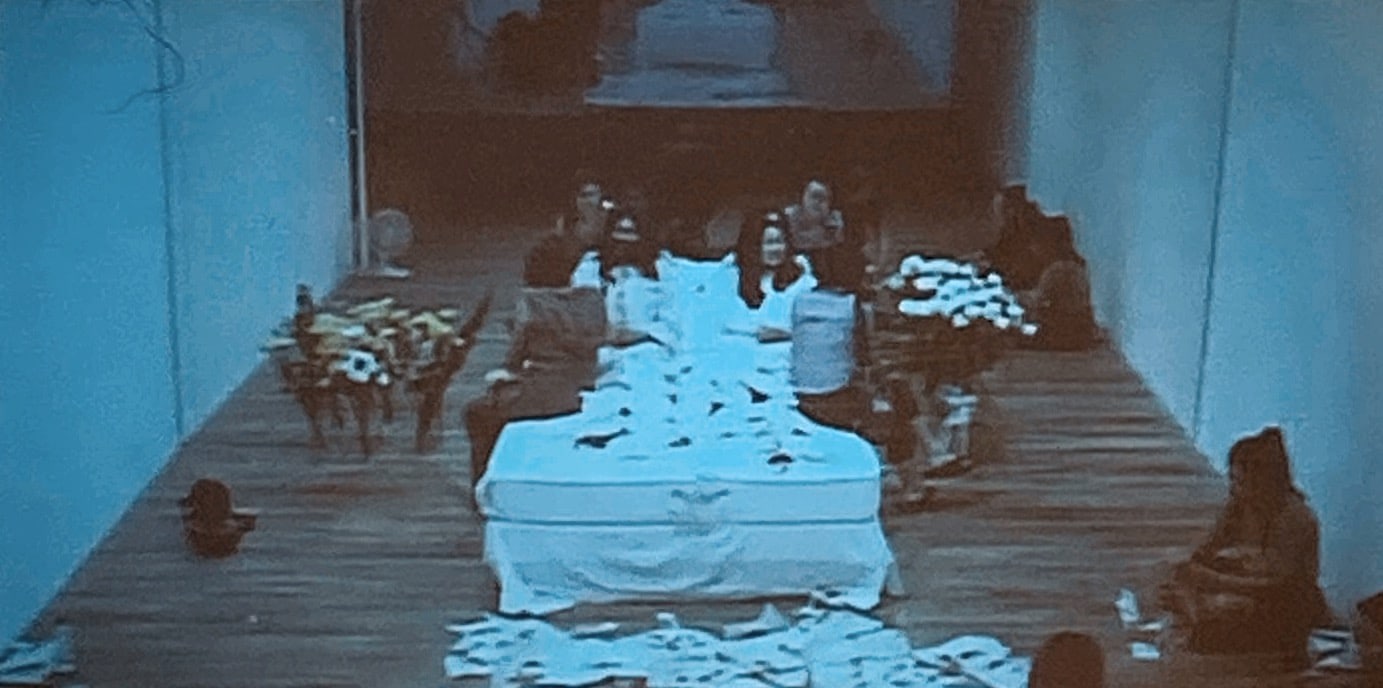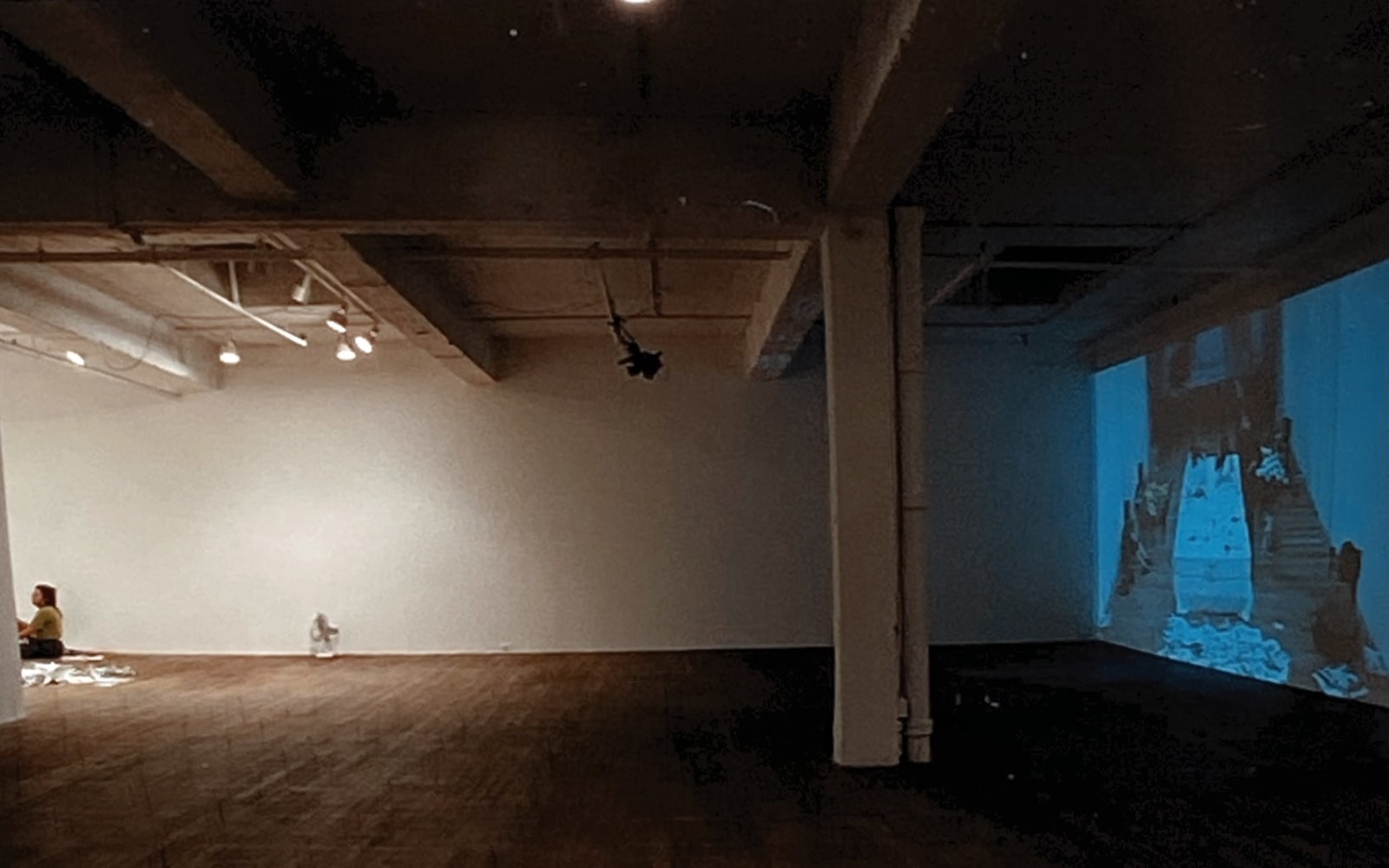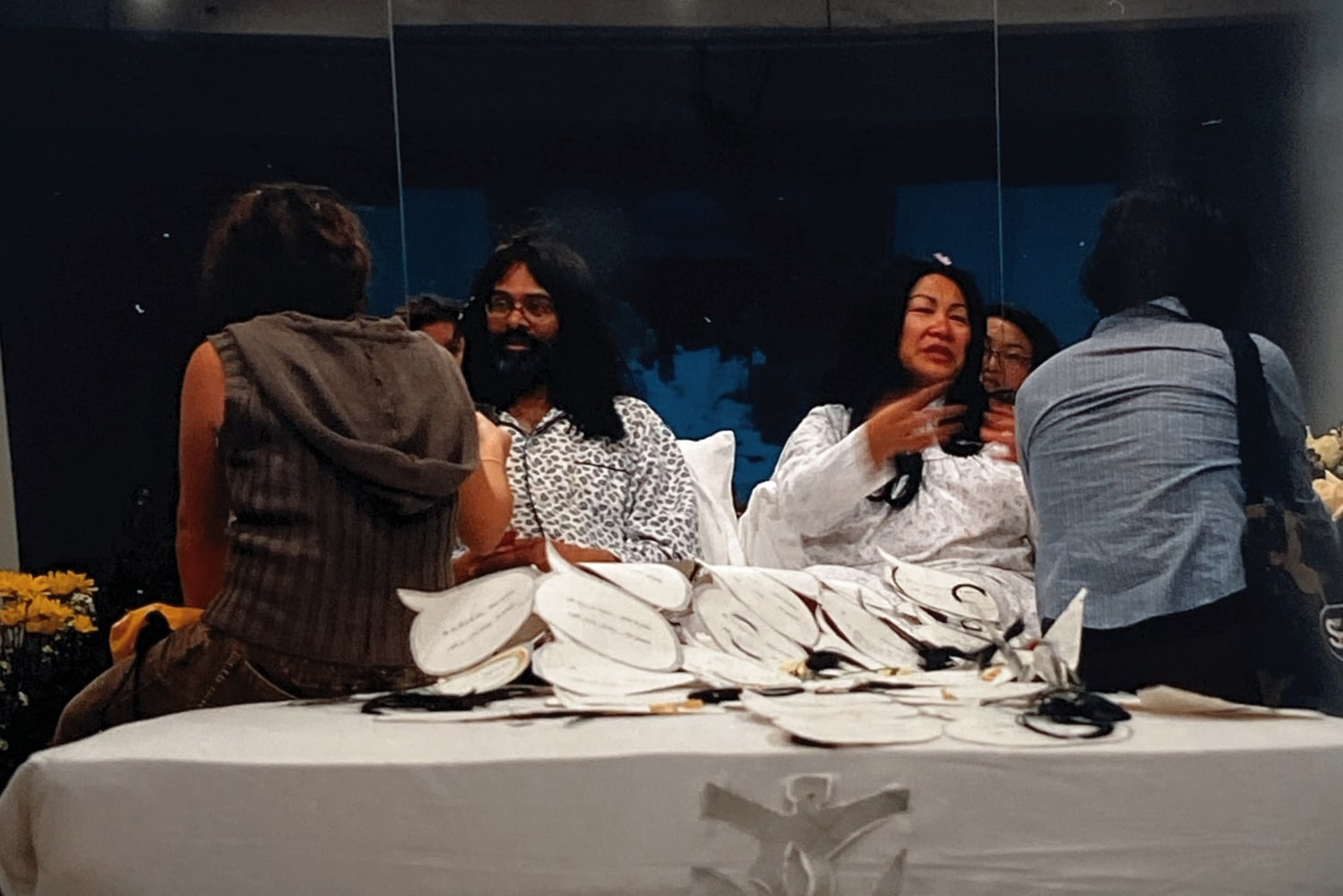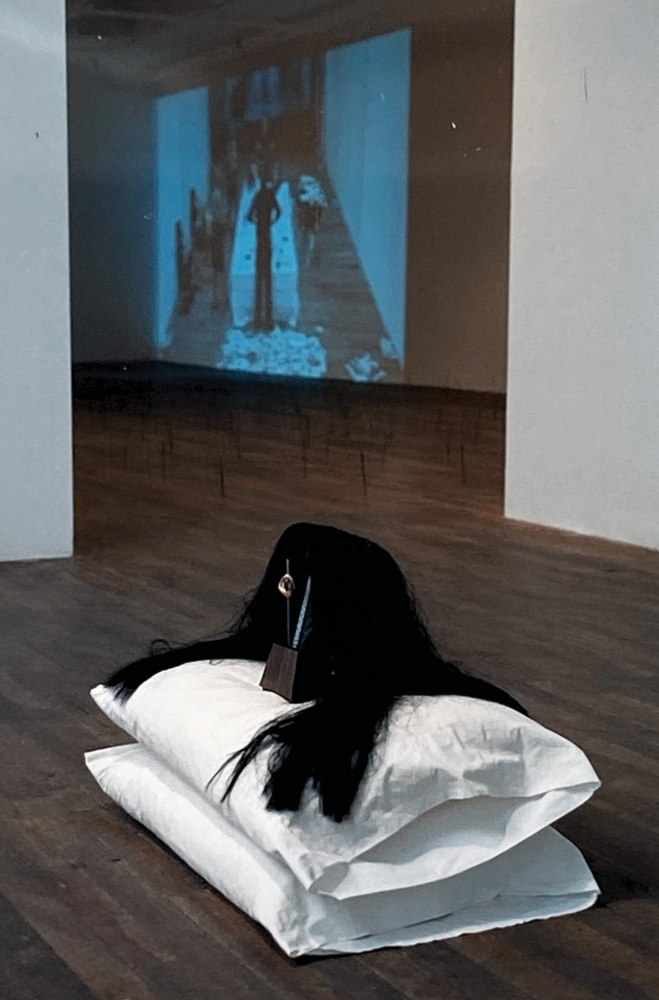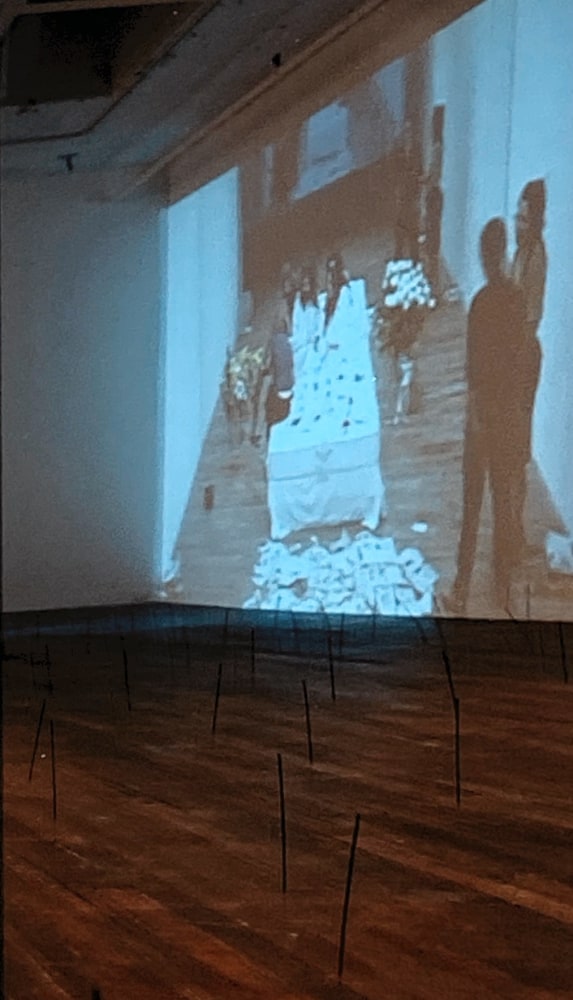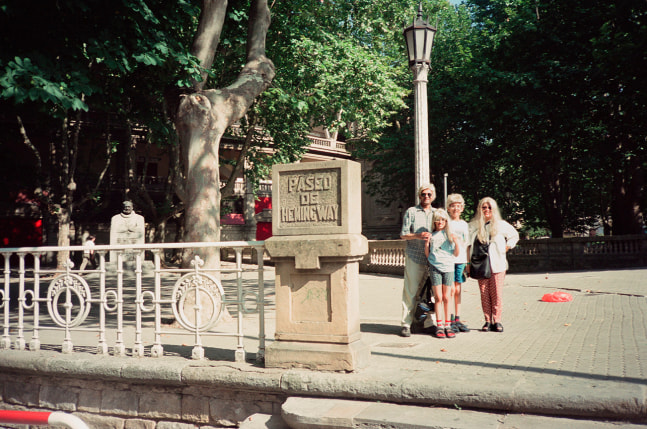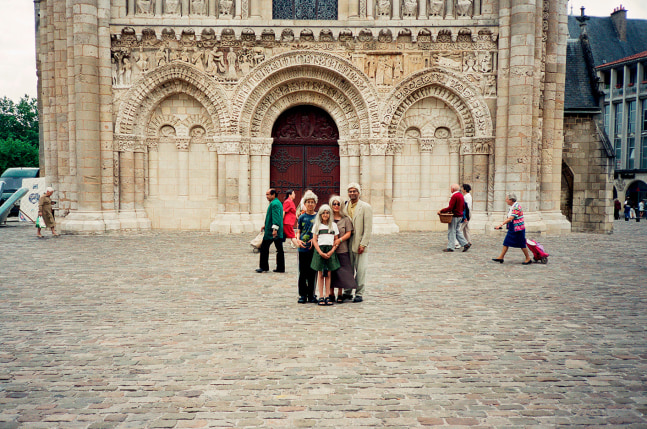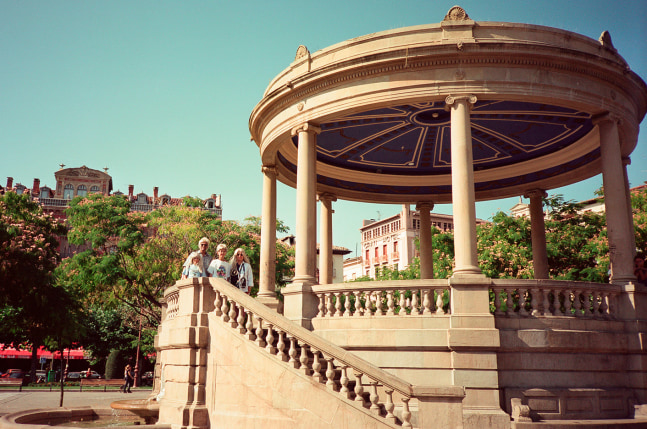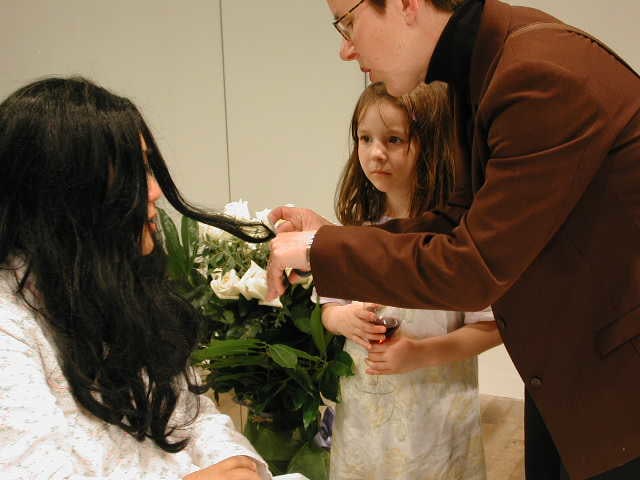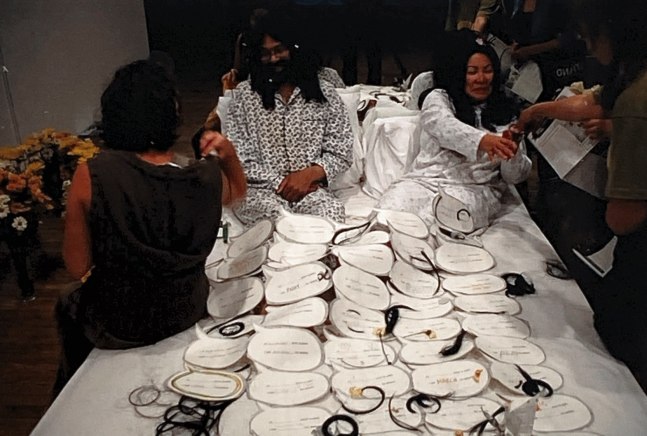
As a part of Connecting Bodies, Al-An deSouza and Yong Soon Min exhibit three performance works from their oeuvre.
Connecting Bodies attempts a new examination of the contemporary meaning of post‒1960s art by Asian women from the perspective of ‘corporeality.’ It was developed as part of an Asian art project by the National Museum of Modern and Contemporary Art, Korea (MMCA), which has carried out comparative research and exhibitions on Asian contemporary art beyond national borders. The body is a place where various ideologies and situations intersect, and it is also a locus that reveals difference and diversity. Artists from 11 Asian countries include Al-An deSouza with Yong Soon Min, Atsuko Tanaka, Cao Fei, Lee Bul, Mariko Mori, Pacita Abad, Pinaree Sanpitak, Shigeko Kubota, Theresa Hak Kyung Cha, Yayoi Kusama, Yoko Ono and others.
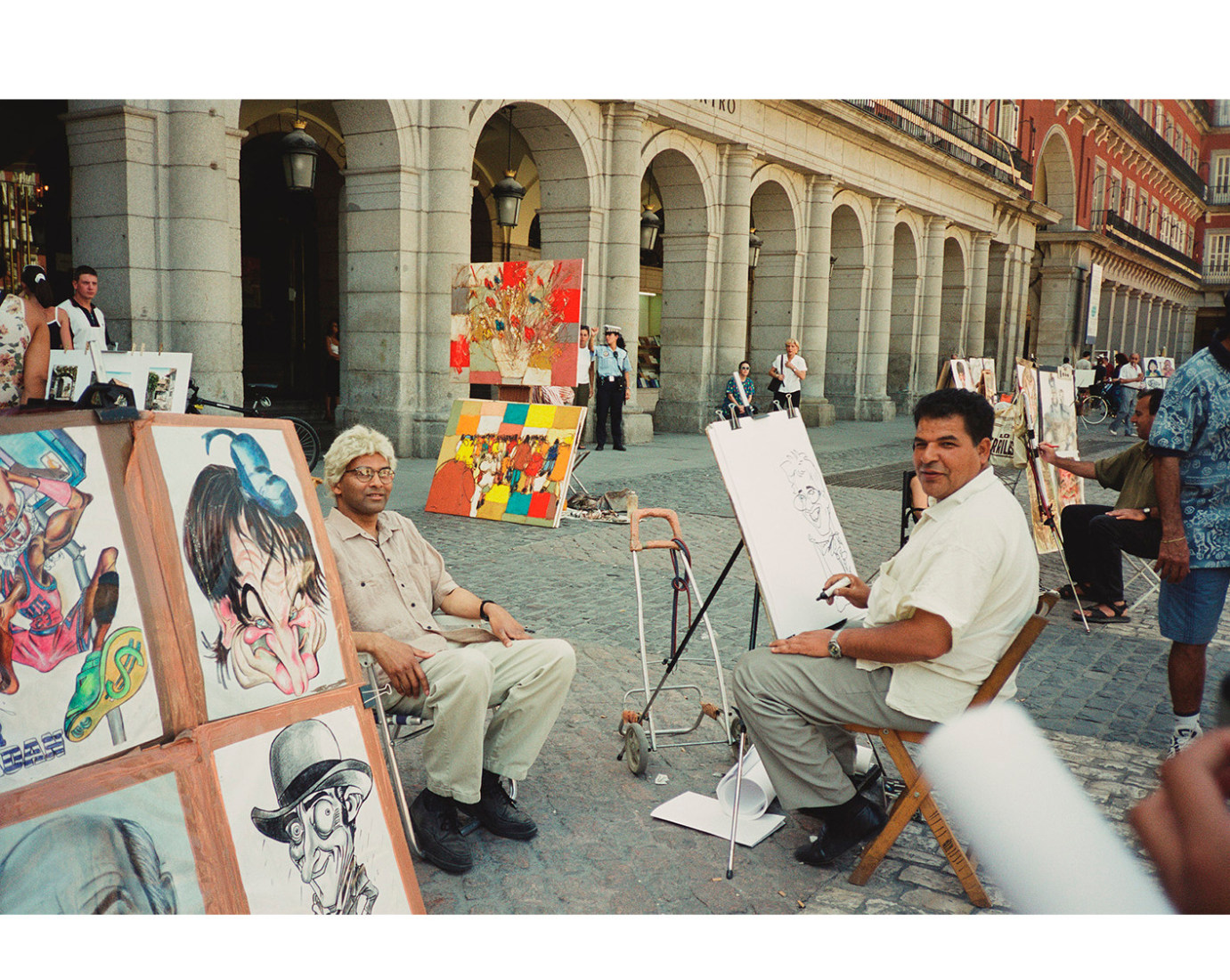
Tress/Pass (1998)
In 1998, the two artists along with deSouza’s two children, then aged 11 and 8, traveled by road from Paris, France, to Lisbon, Portugal, while wearing blonde wigs. The wigs attempted to create the illusion of a white European family on holiday. Playing with ideas of “passing,” of simultaneous hypervisibility and invisibility, the artists sought to highlight the racialized nature of what constitutes public space, and its constant negotiation by (im)migrants.
At a time before selfies, the artists asked locals and other travelers to take their picture in front of typical tourist sites. Always remaining in character, and without acknowledging the wigs, the performers parried disapproving looks and comments, particularly those directed towards the children. However, with rare exceptions (for example, from another blonde family who asked directly), most passersby pretended to ignore the wigs even while closely tracking the performers.
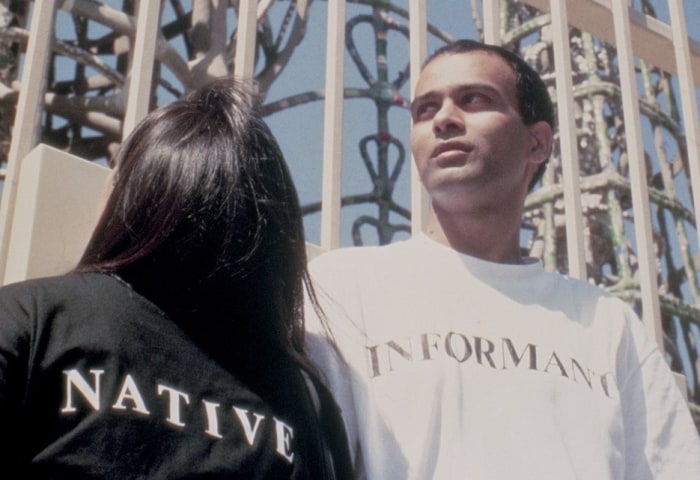
Alter Idem/Performing Personae (1994)
Part of a larger project and solo installation, alter idem/performing personae, at London’s Camerawork Gallery. The artists conducted a roving performance of racially profiled sites in their home city of Los Angeles, while wearing t-shirts marked on the back with “Native” and on the front with “Informant.” As “hyphenated minorities,” expected to be informants of their “own” cultures and withheld opportunities to speak or make work about anything else, the artists invoked anthropological tropes to comment on their own status within the US artworld. The work also highlighted the racial stereotypes within the various tourist sites, and the racial coding within supposedly everyday sites.
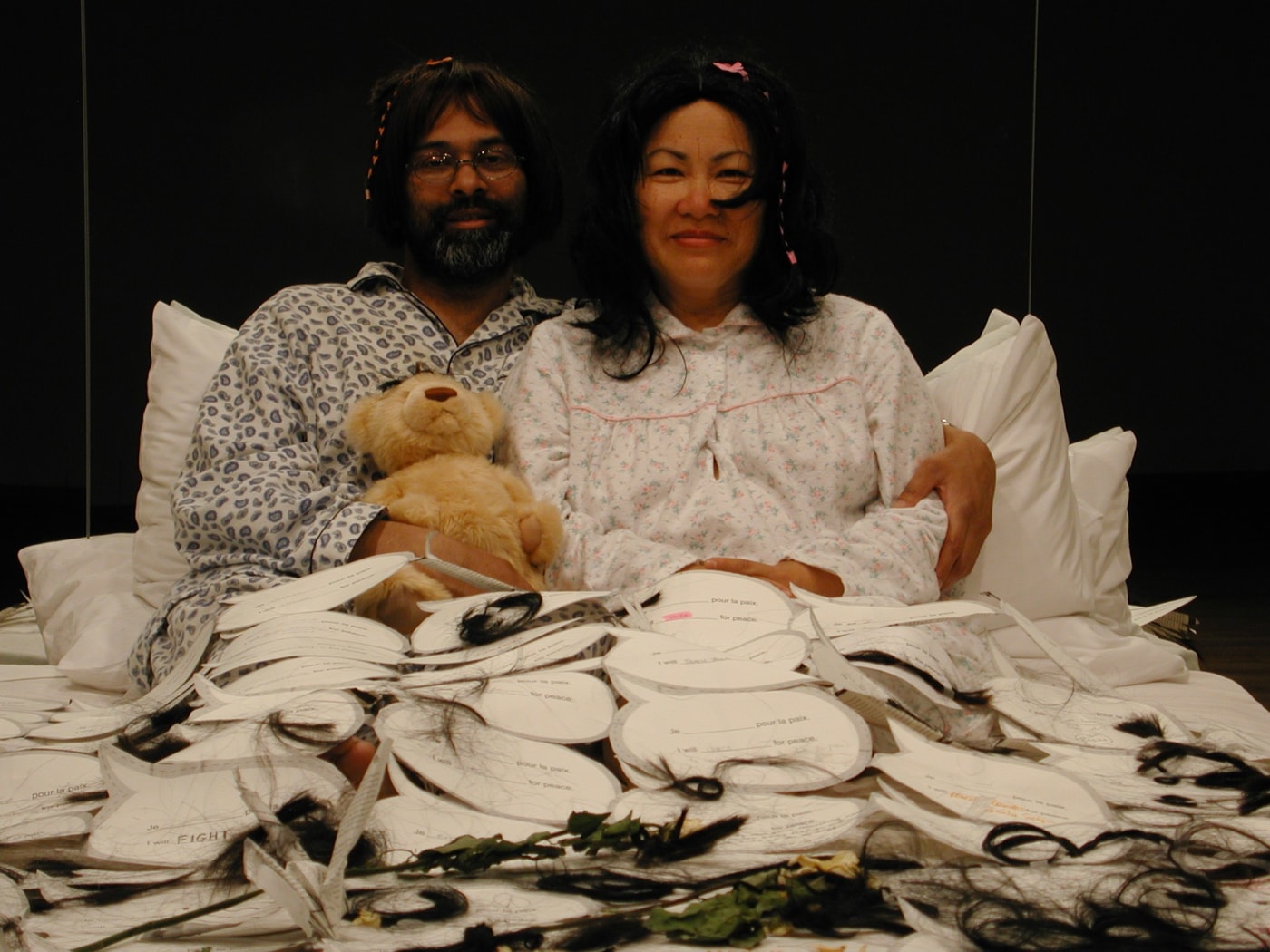
Will **** for Peace (2003)
Will **** for Peace is a collaborative performance/installation by Los Angeles-based artists Yong Soon Min and Al-An deSouza. First presented in 2002, the work resonates with the tragedy of September 11 and the subsequent hyper-militarization that is now bombarding us from our neighbors to the south. Will**** for Peace is about war, nationalism, militarization, and the complex relationships between artistic activism and peace. The artists revisit the bed-in for peace by newlyweds Yoko Ono and John Lennon, which began on May 26, 1969 at Montreal's Queen Elizabeth Hotel, where they leveraged their celebrity to promote peace and love at a critical socio-political moment during the Vietnam War. Min and deSouza's recreation of John and Yoko's remarkably simple gesture for peace has poignant resonance in today's climate; It is tempered by a 21st-century sobriety, made evident in the revised title, which draws on the phrase “will work for food” that expresses social despair.” – Monika Kin Gagnon, curator, OBORO Gallery, Montreal.

